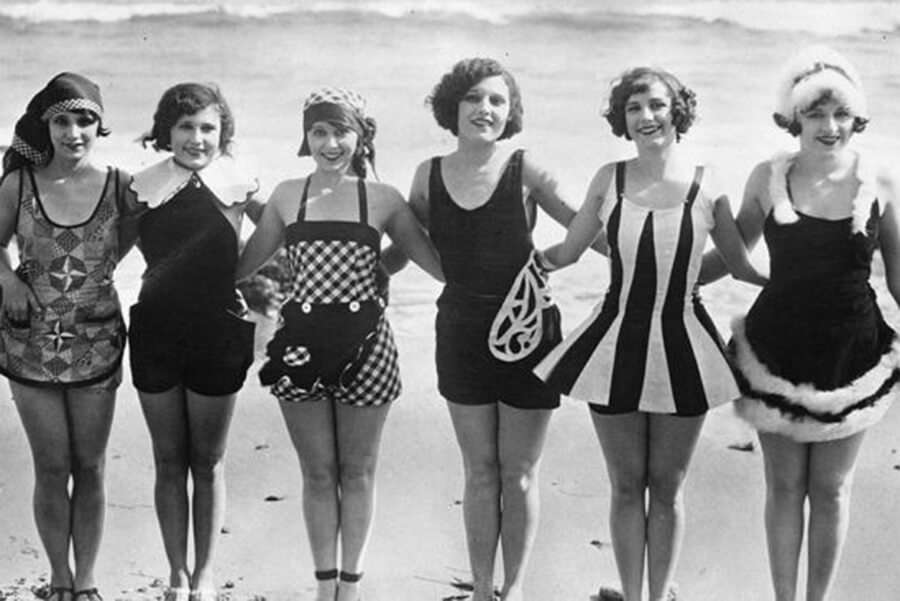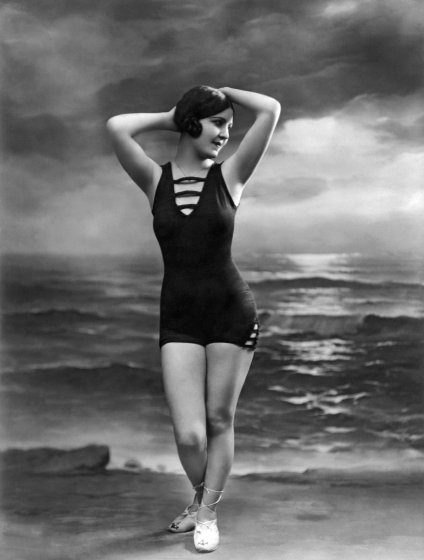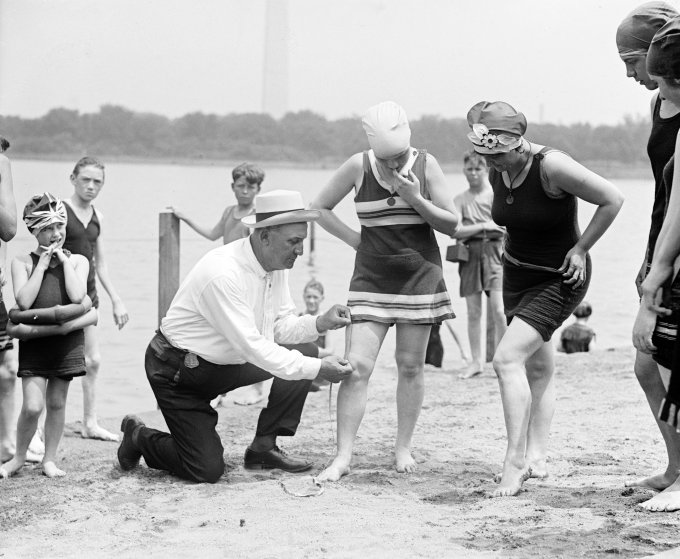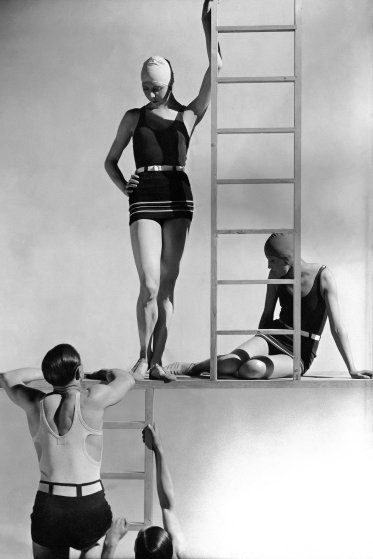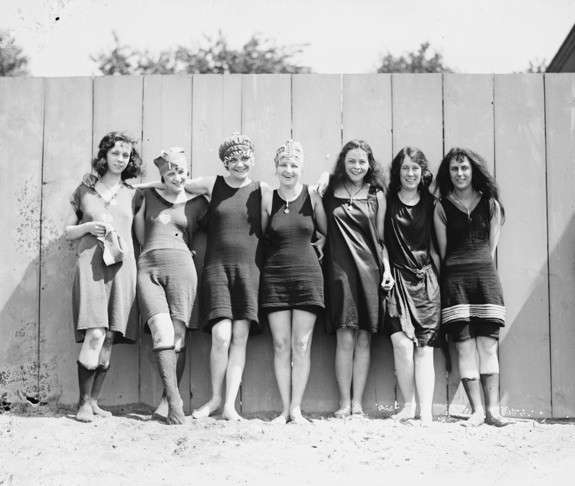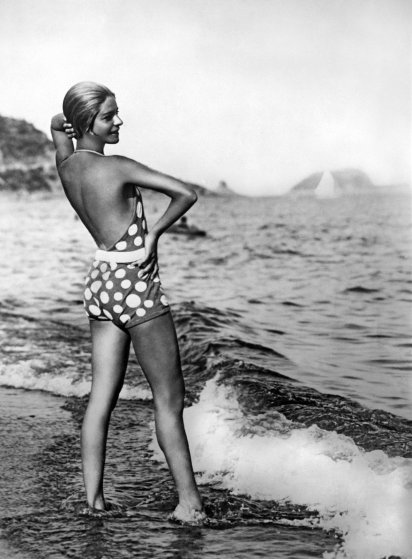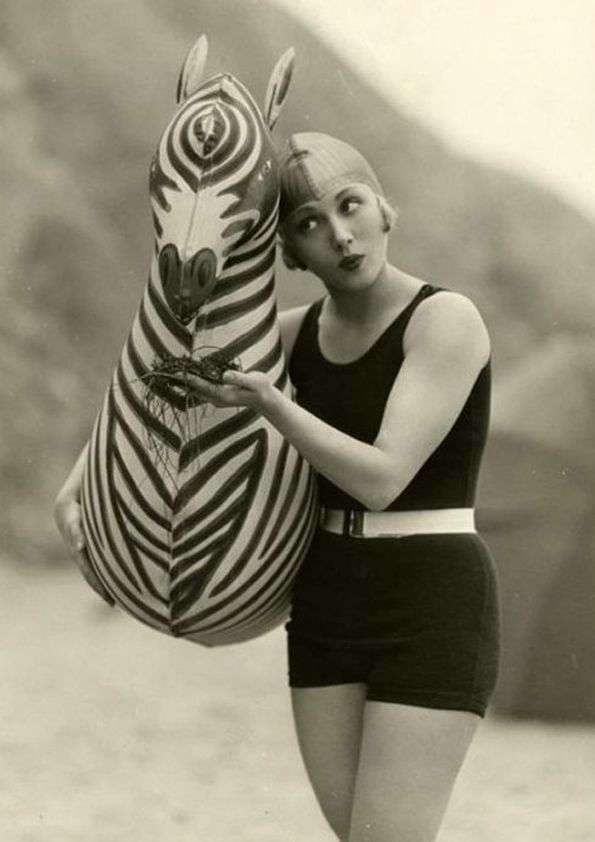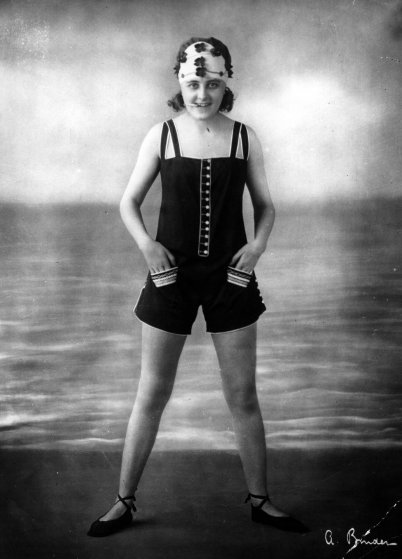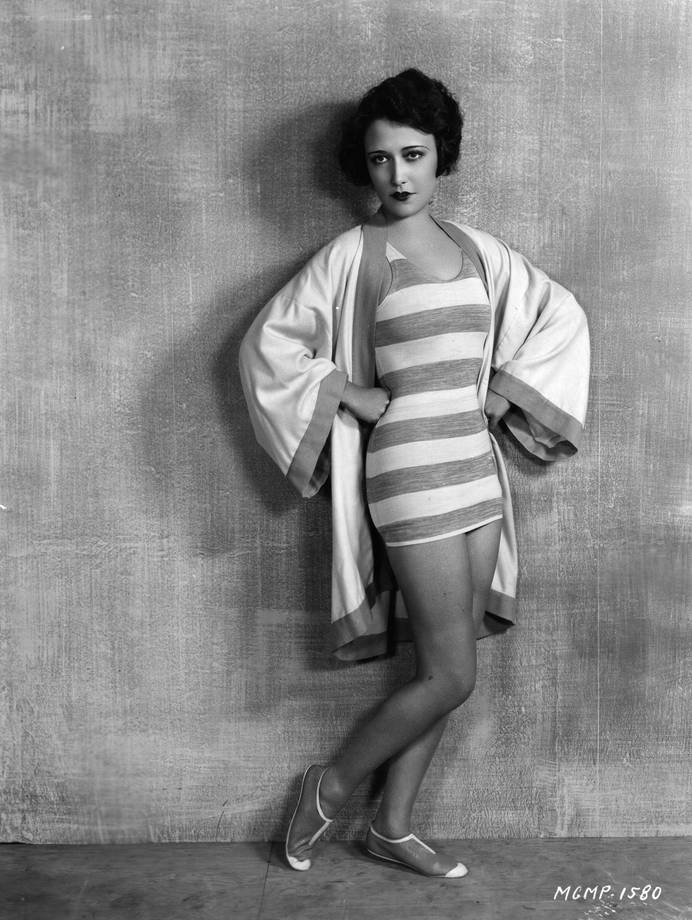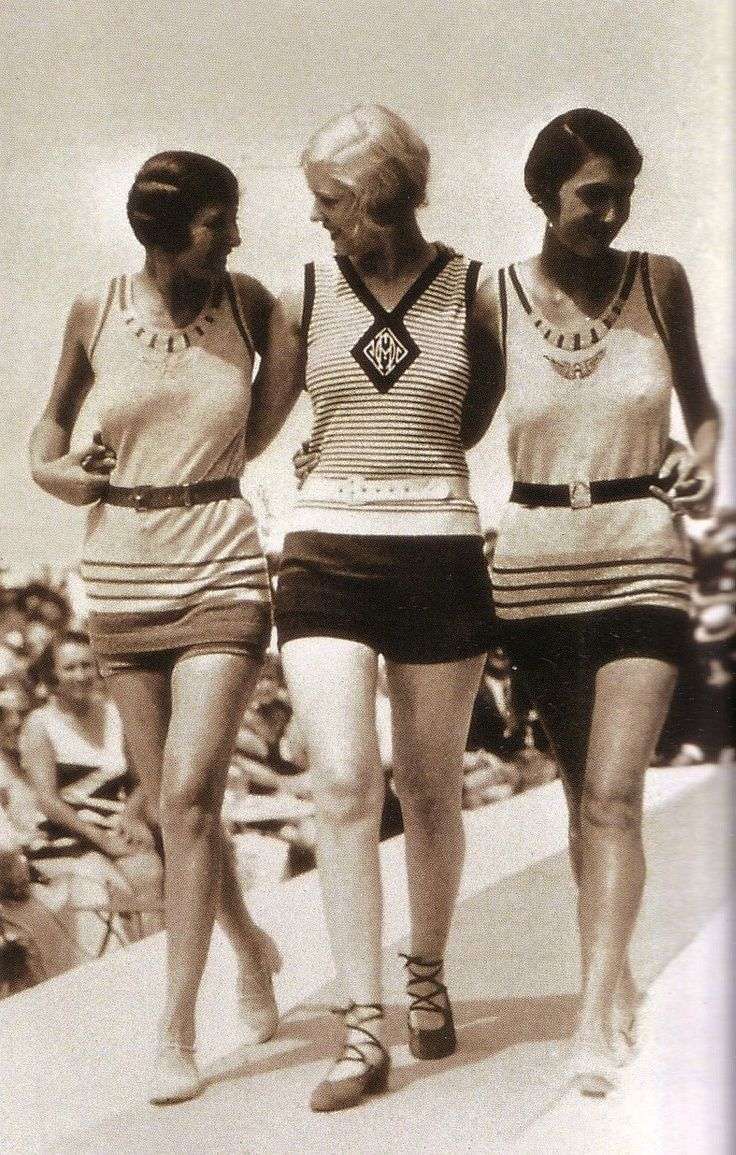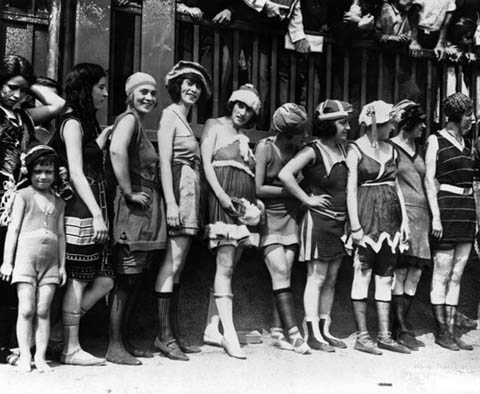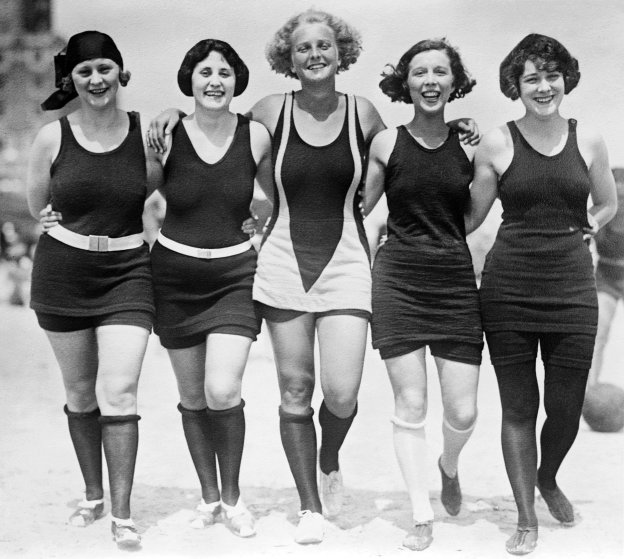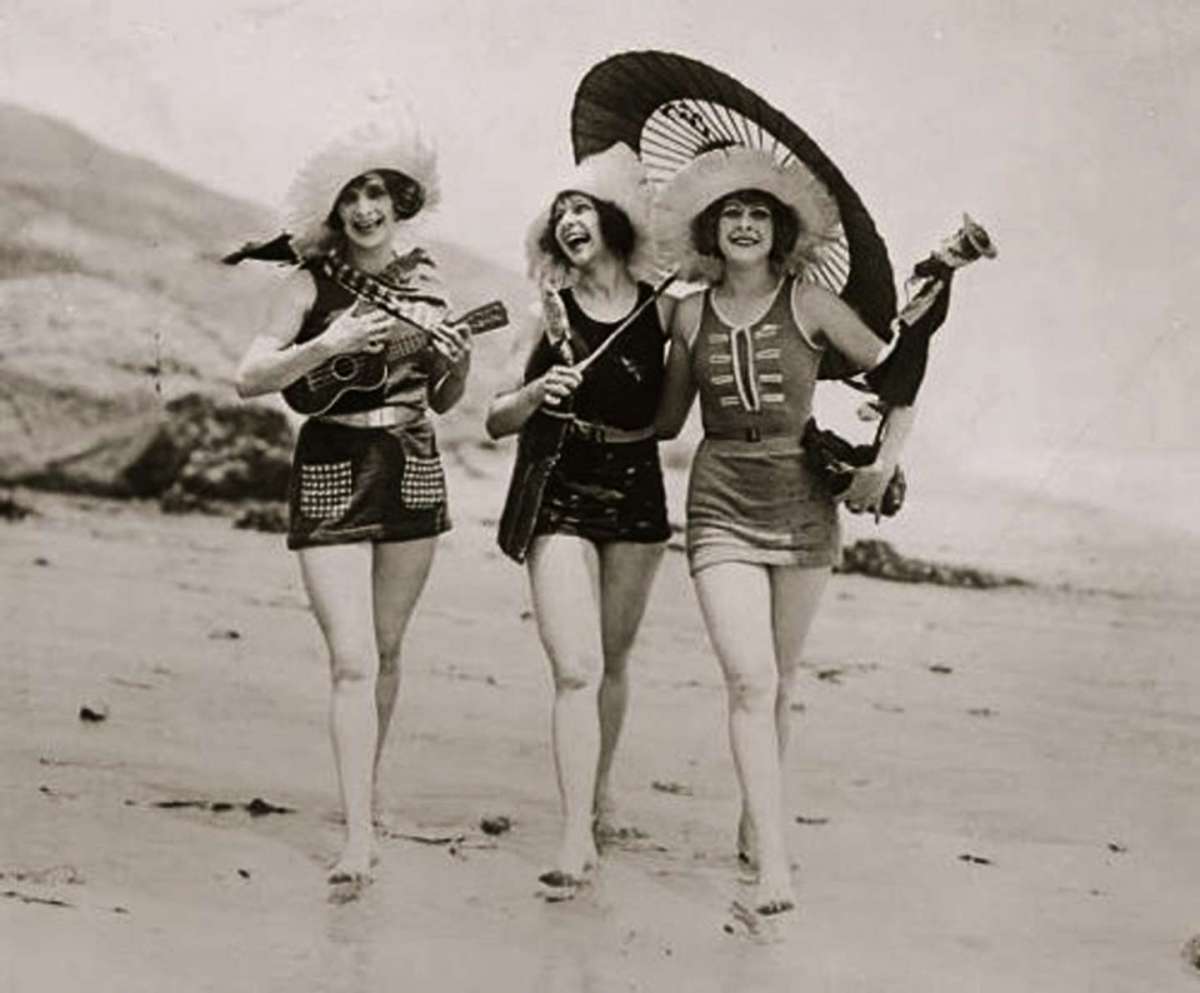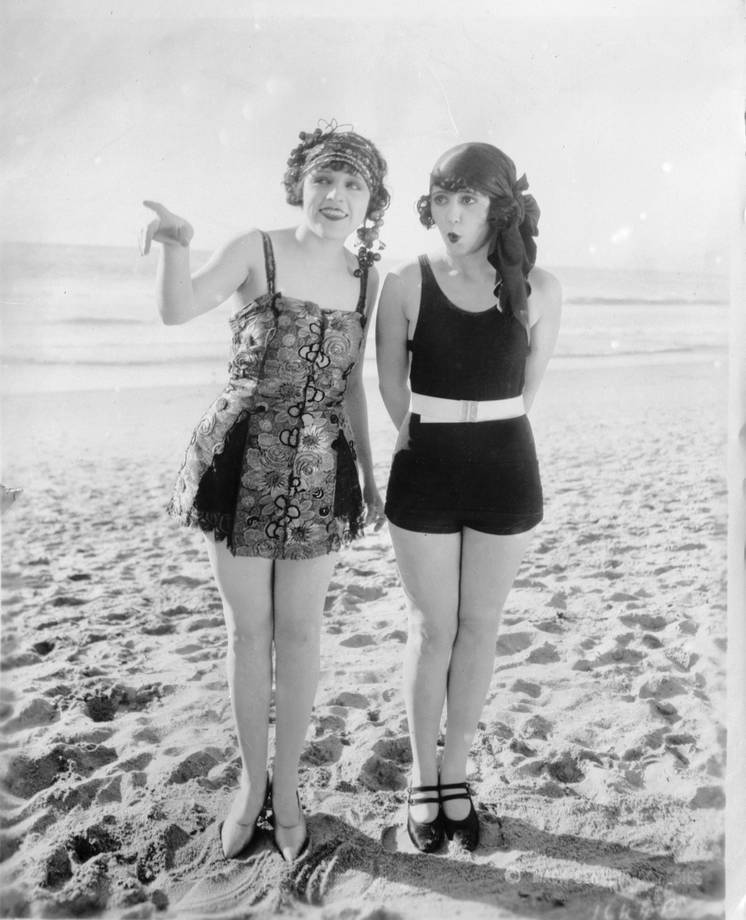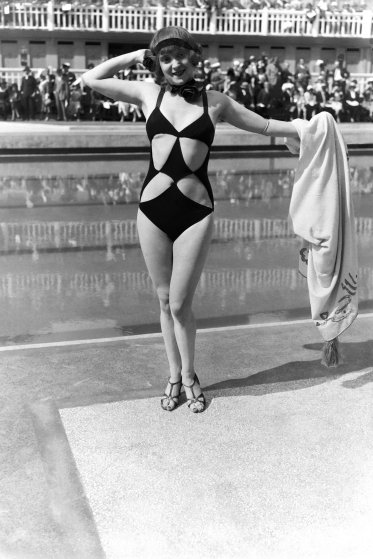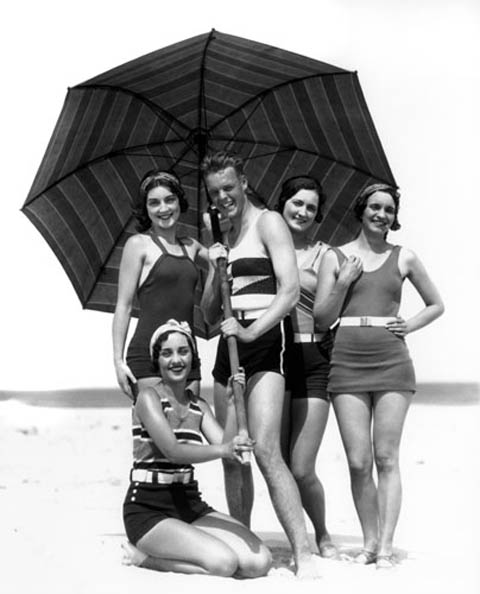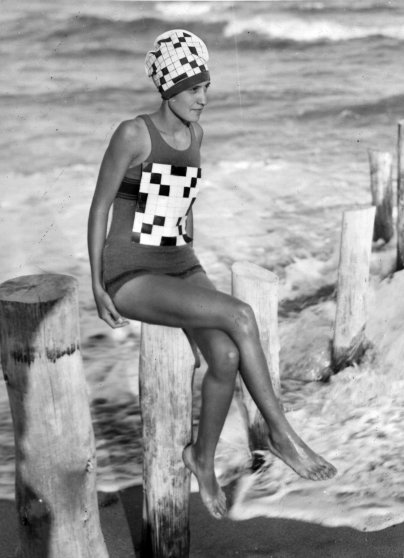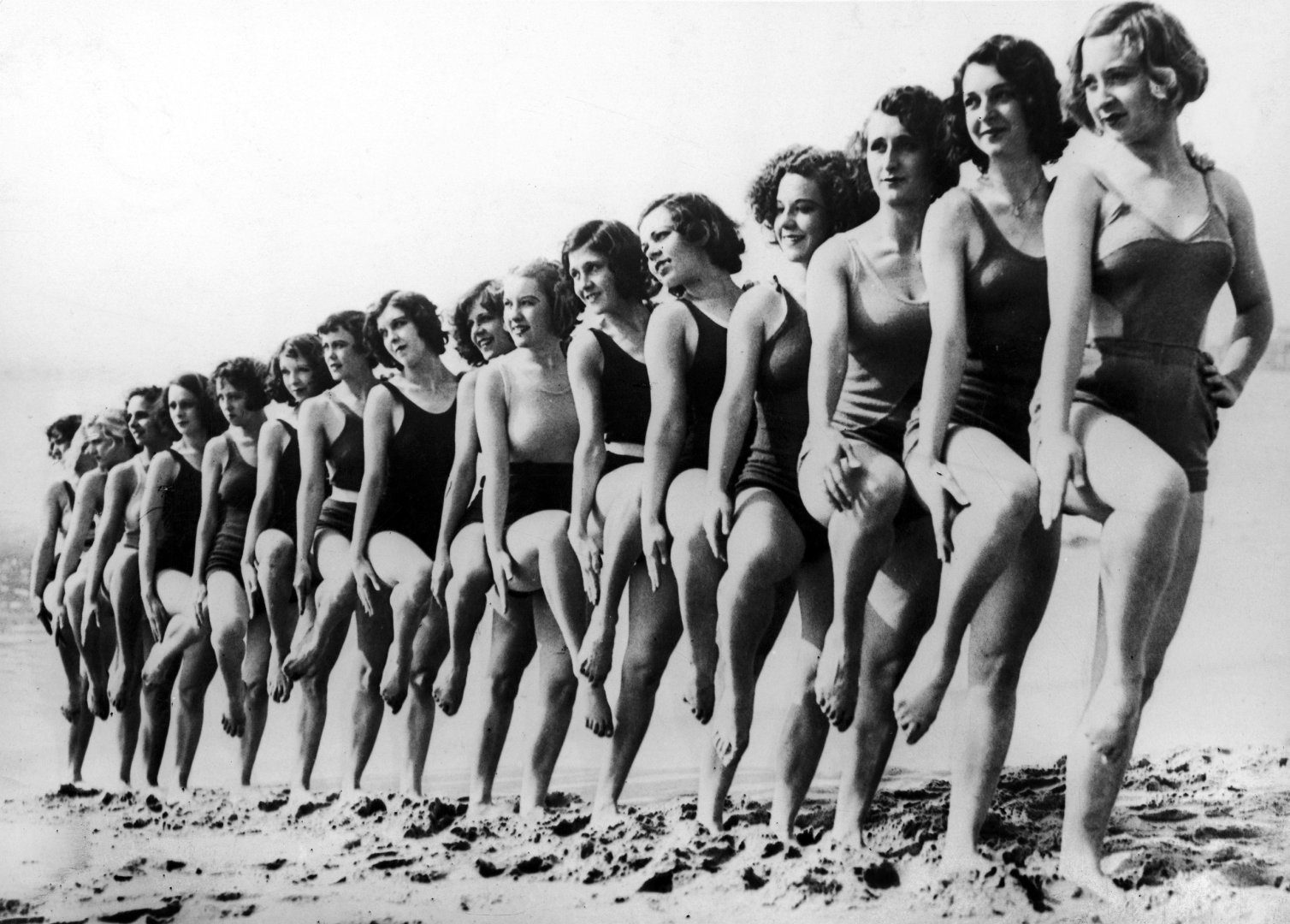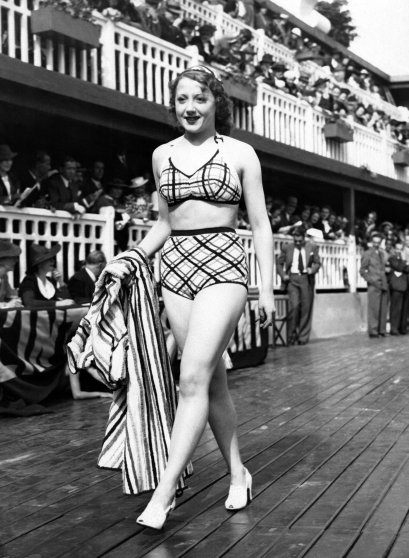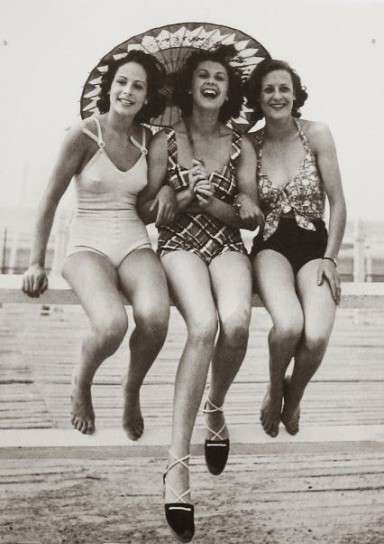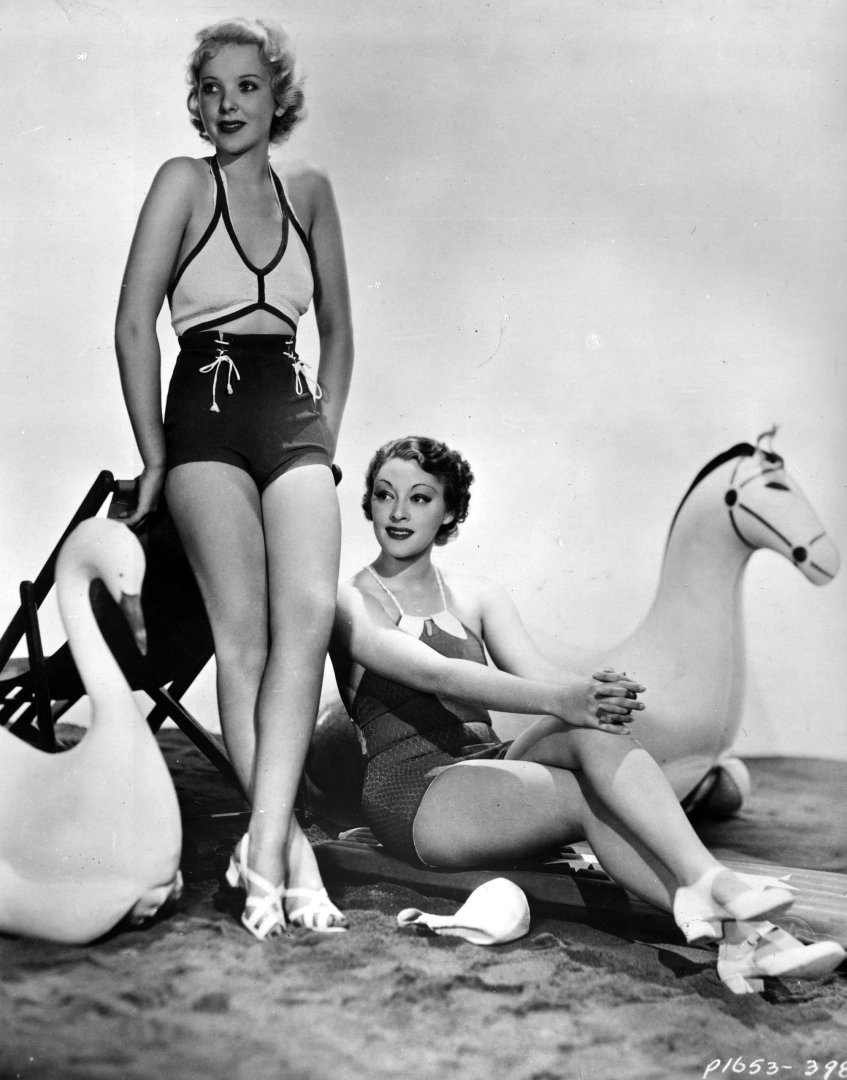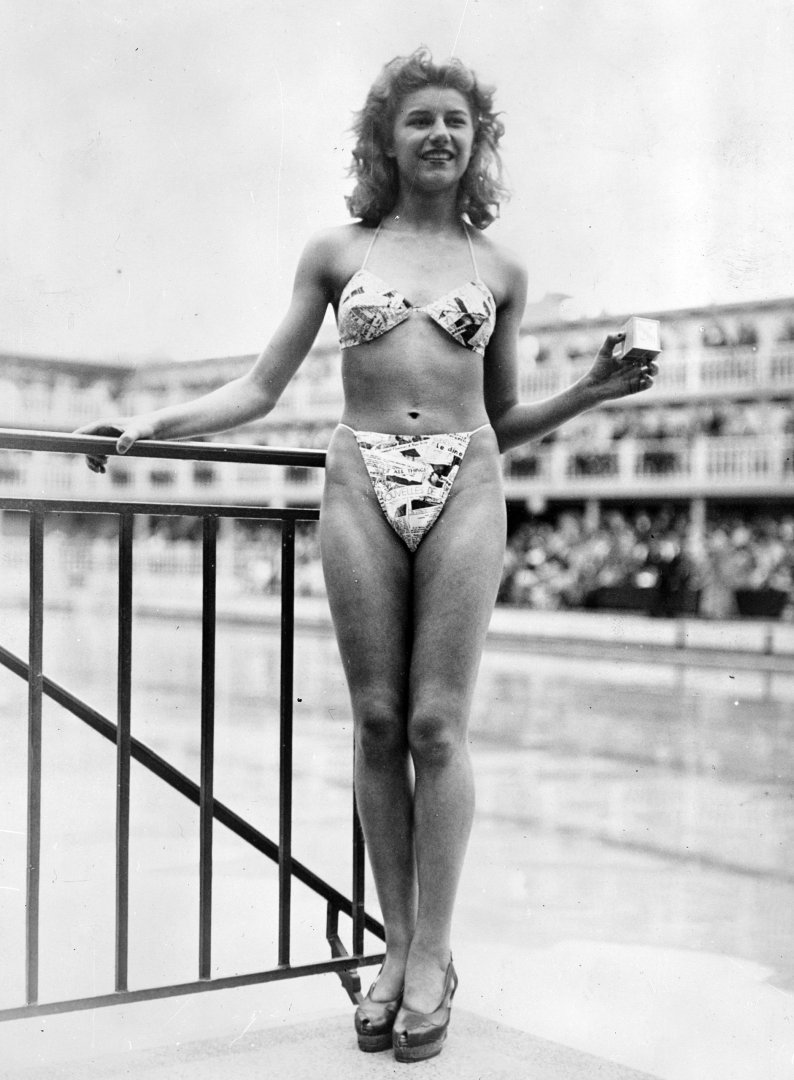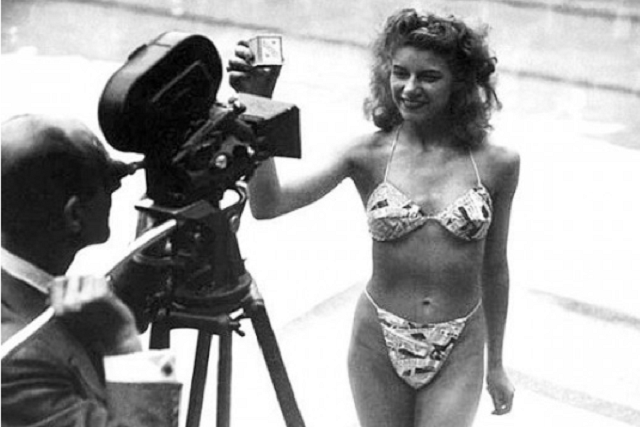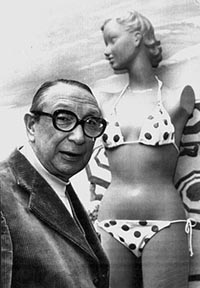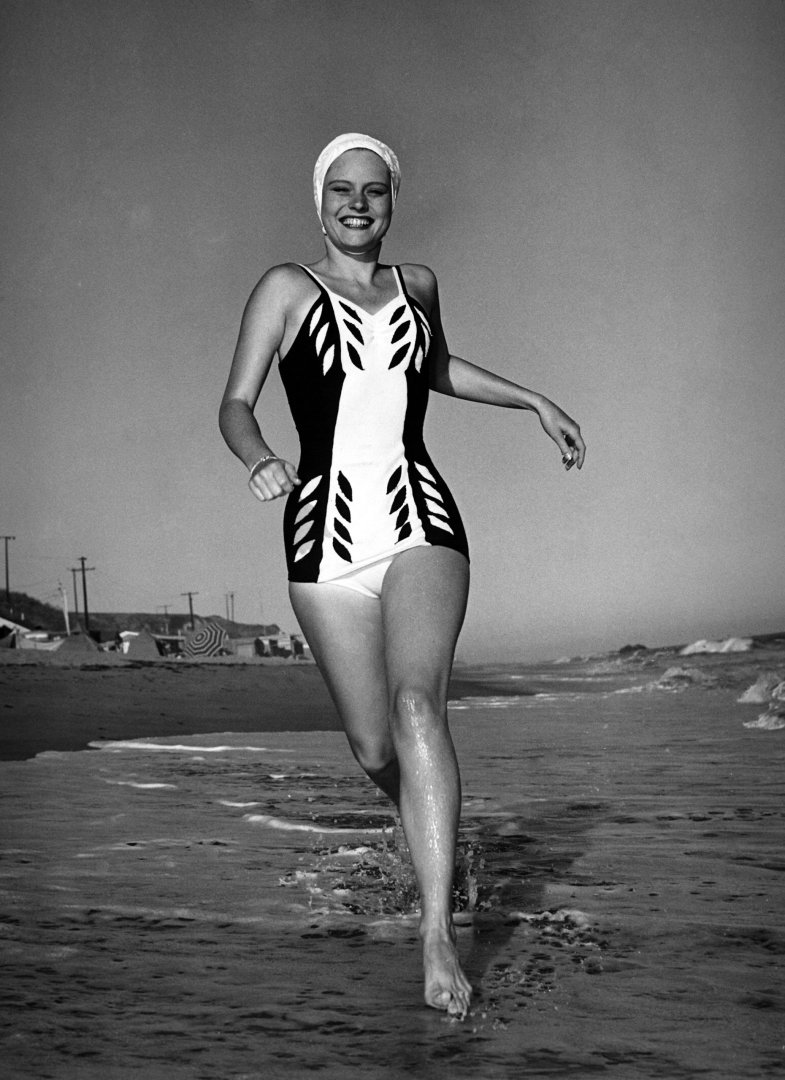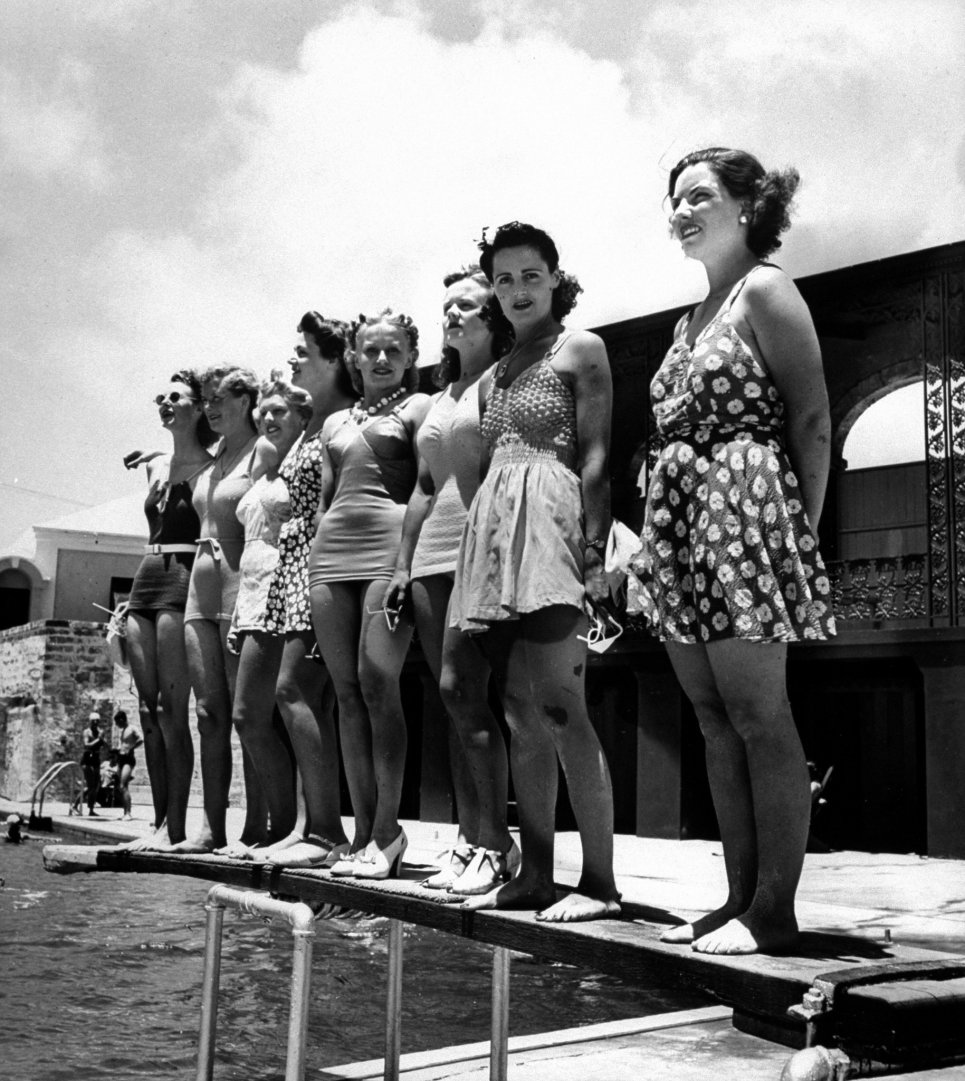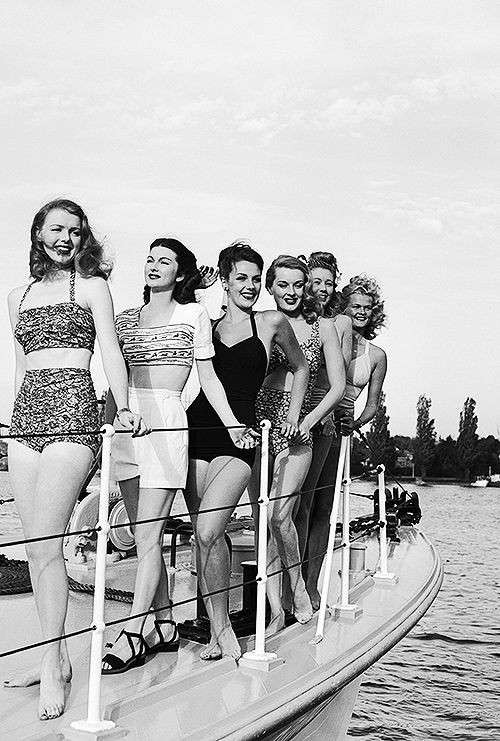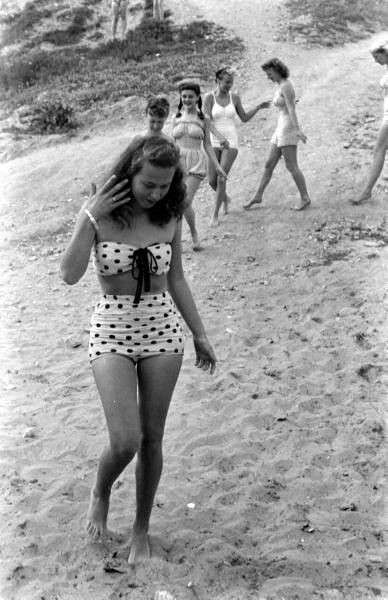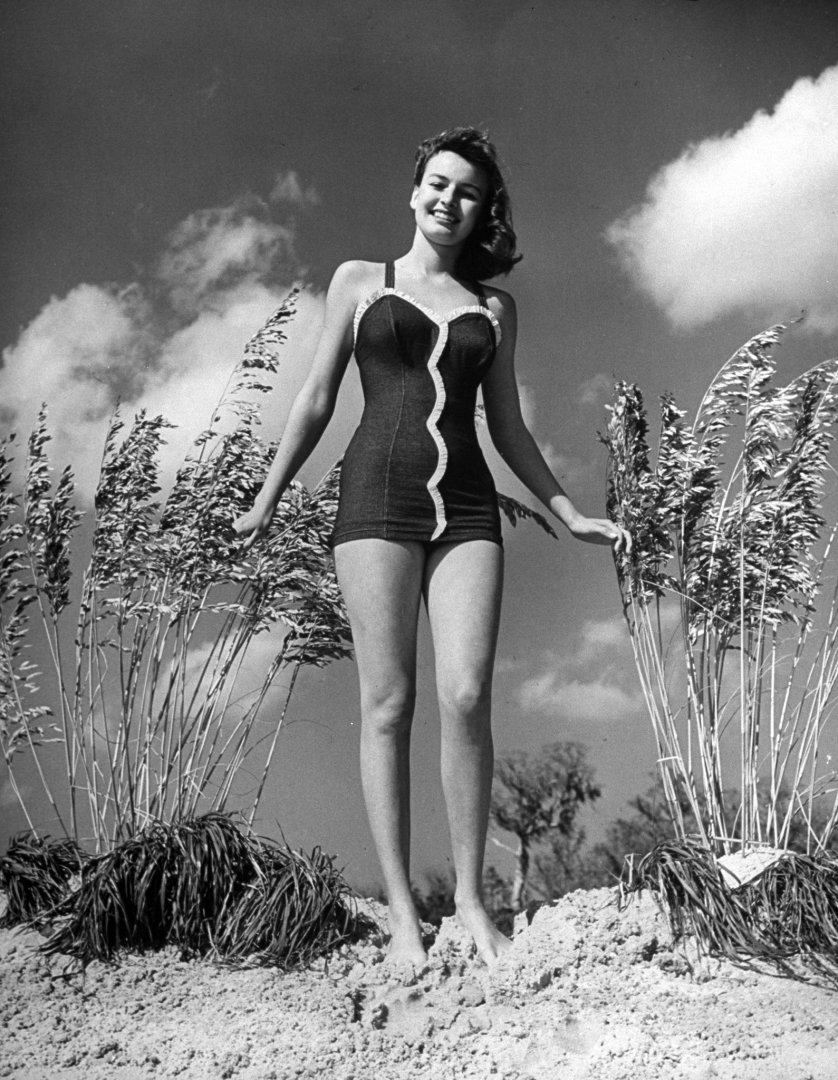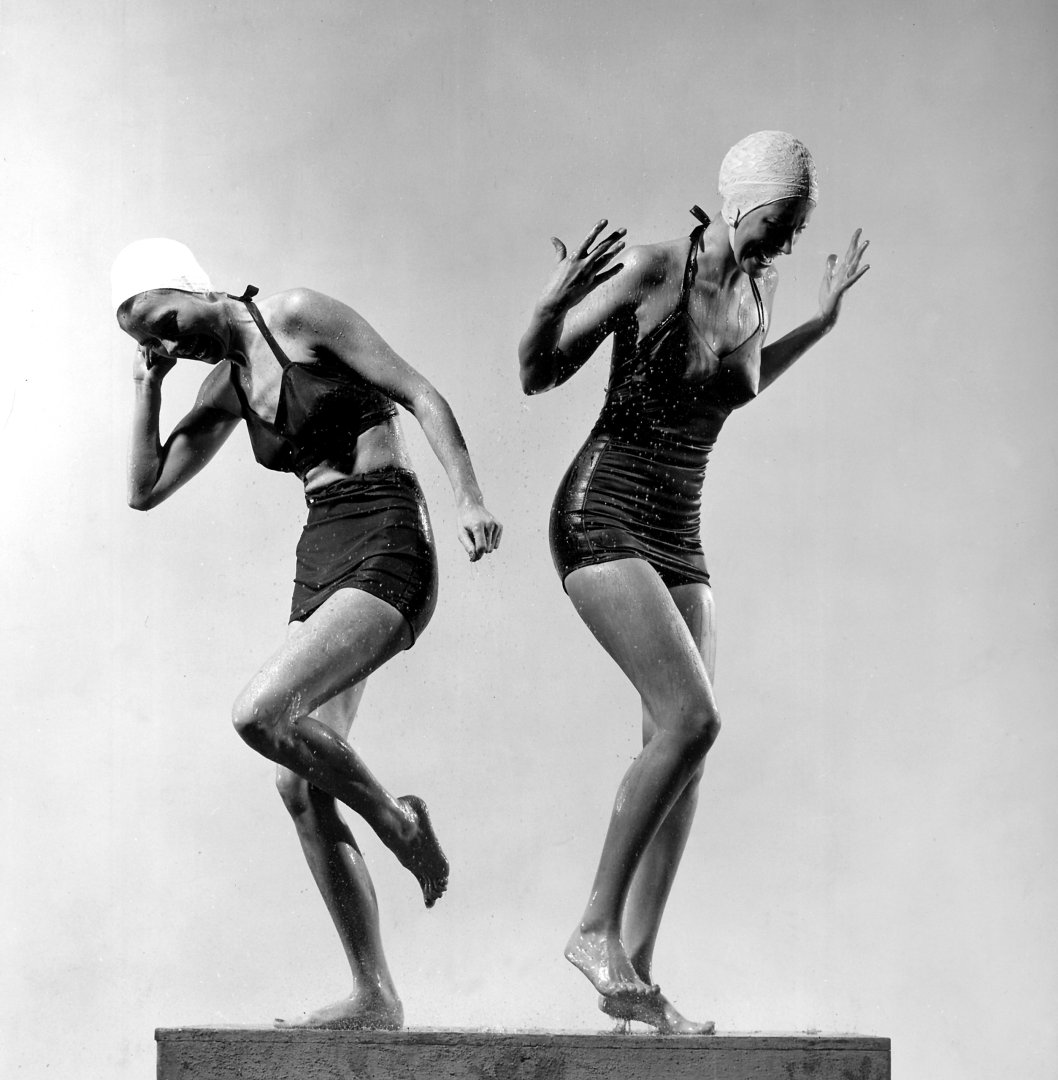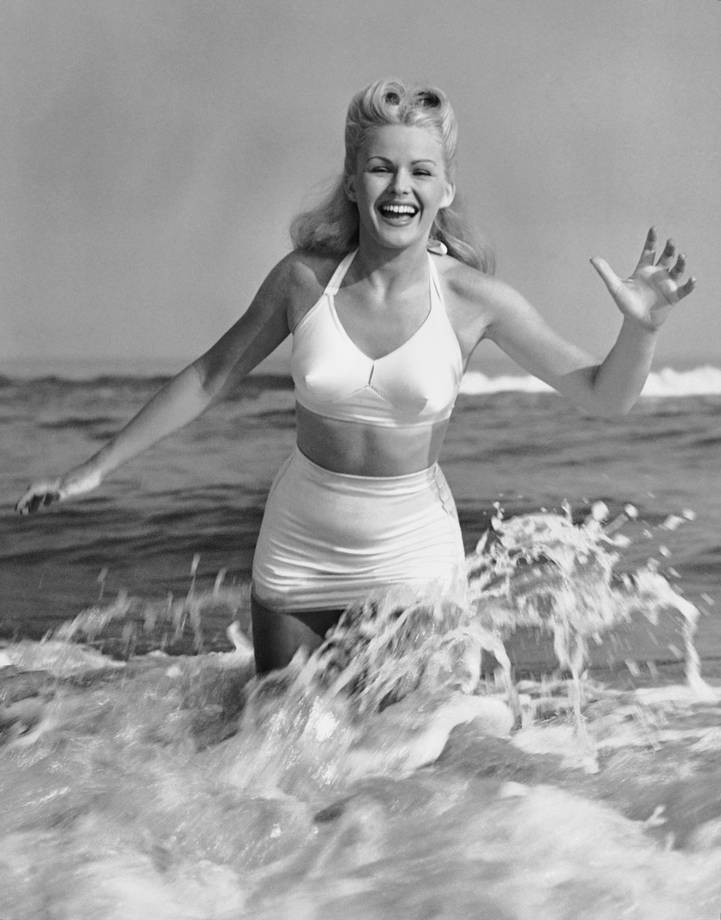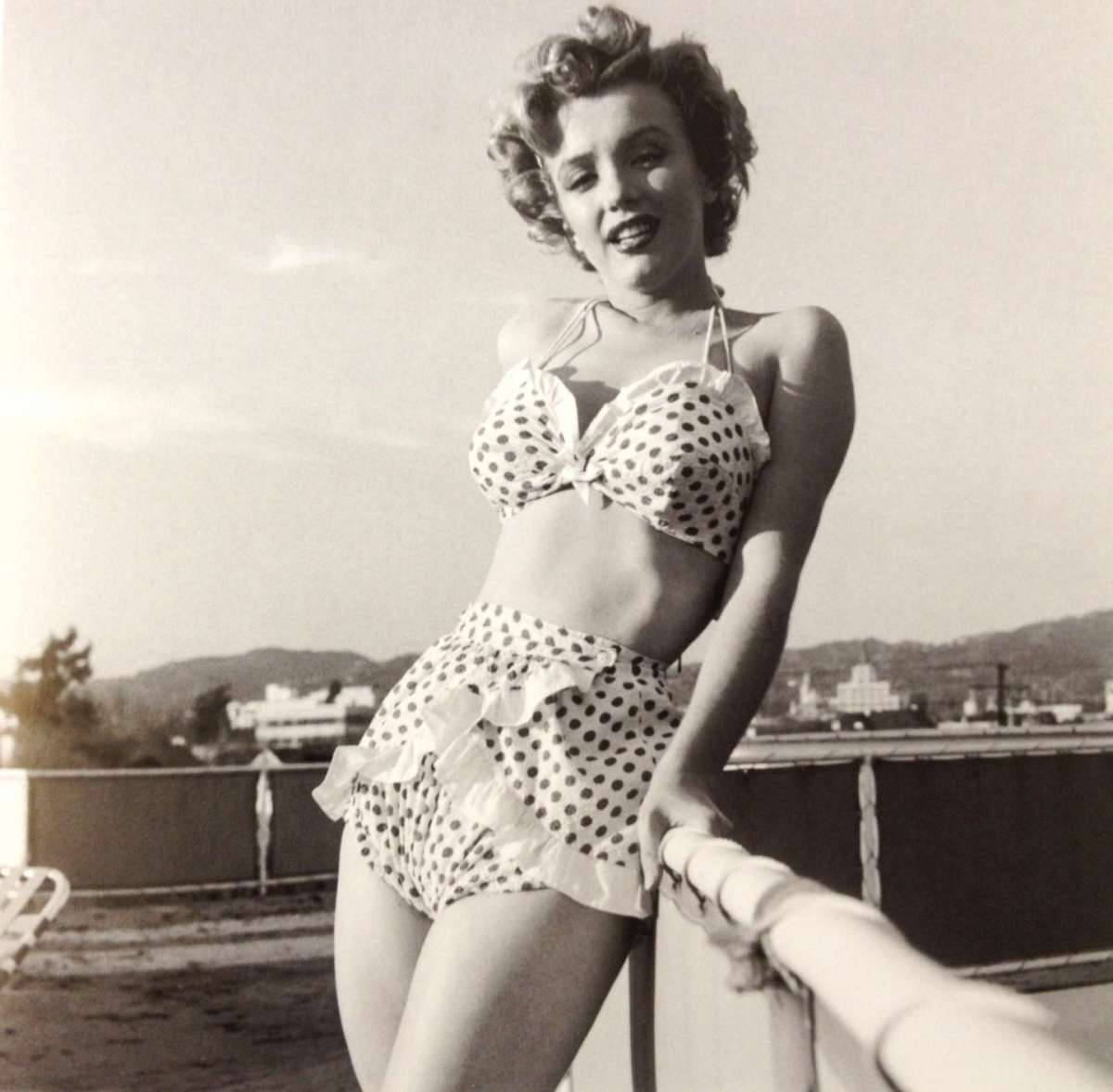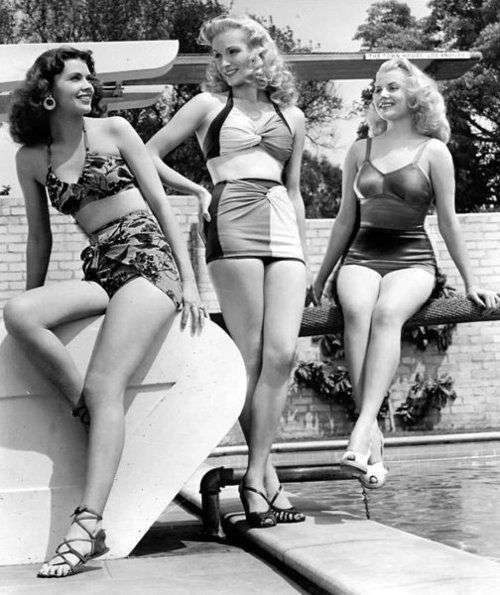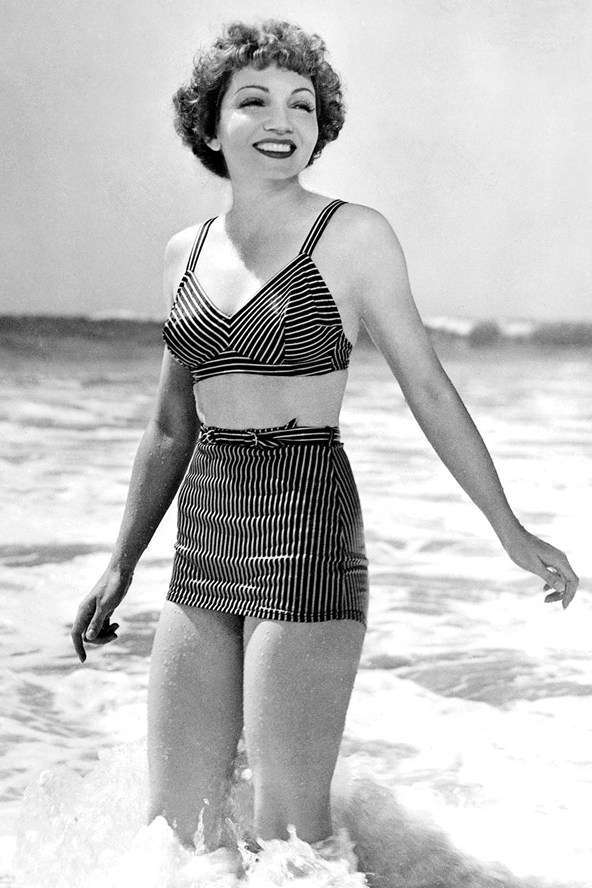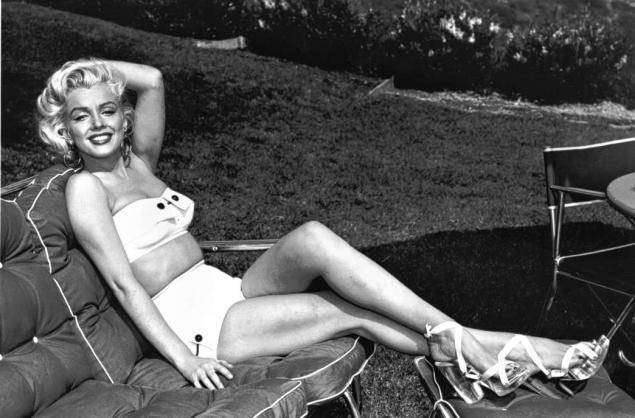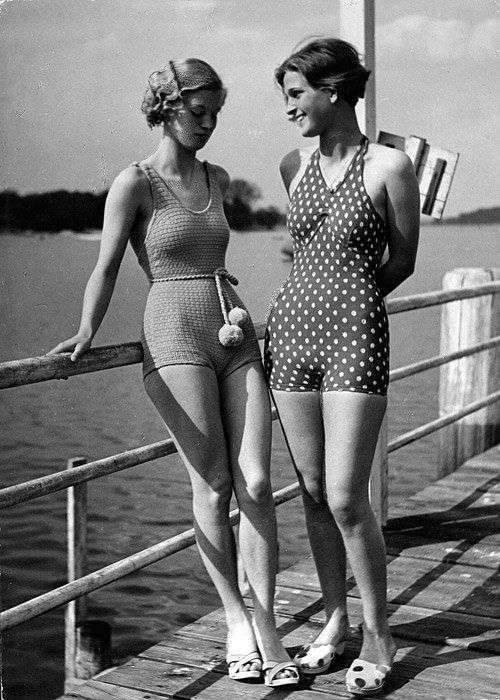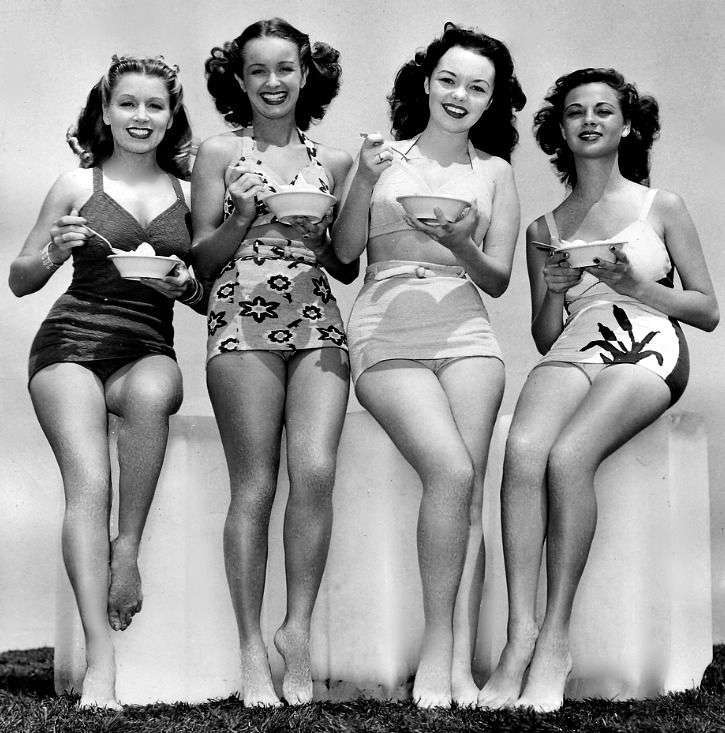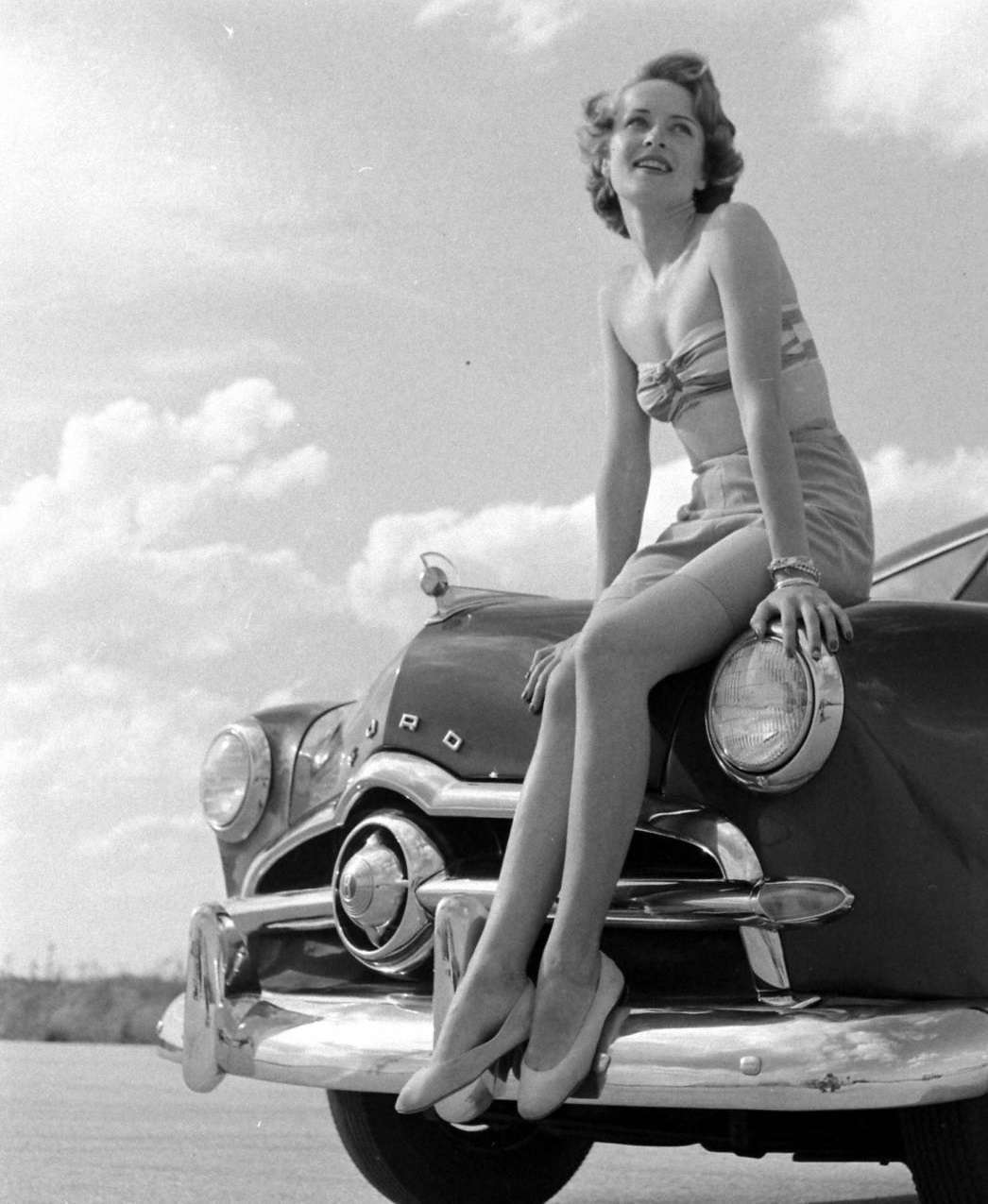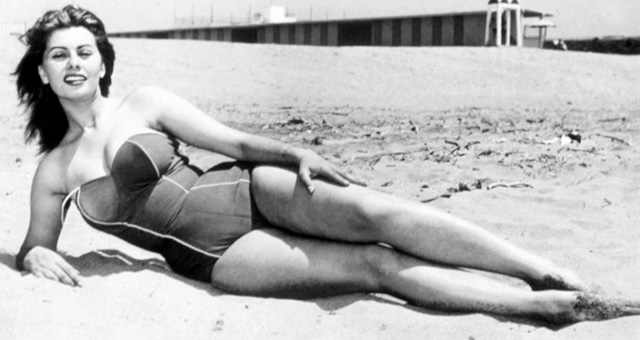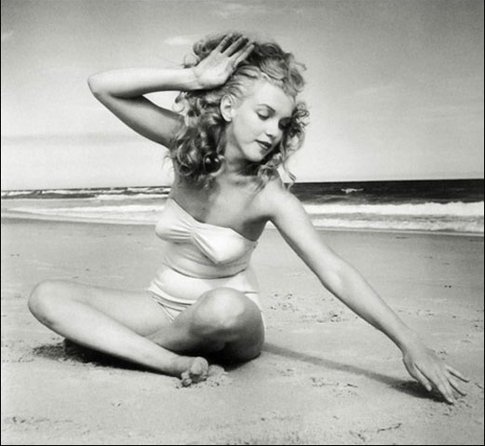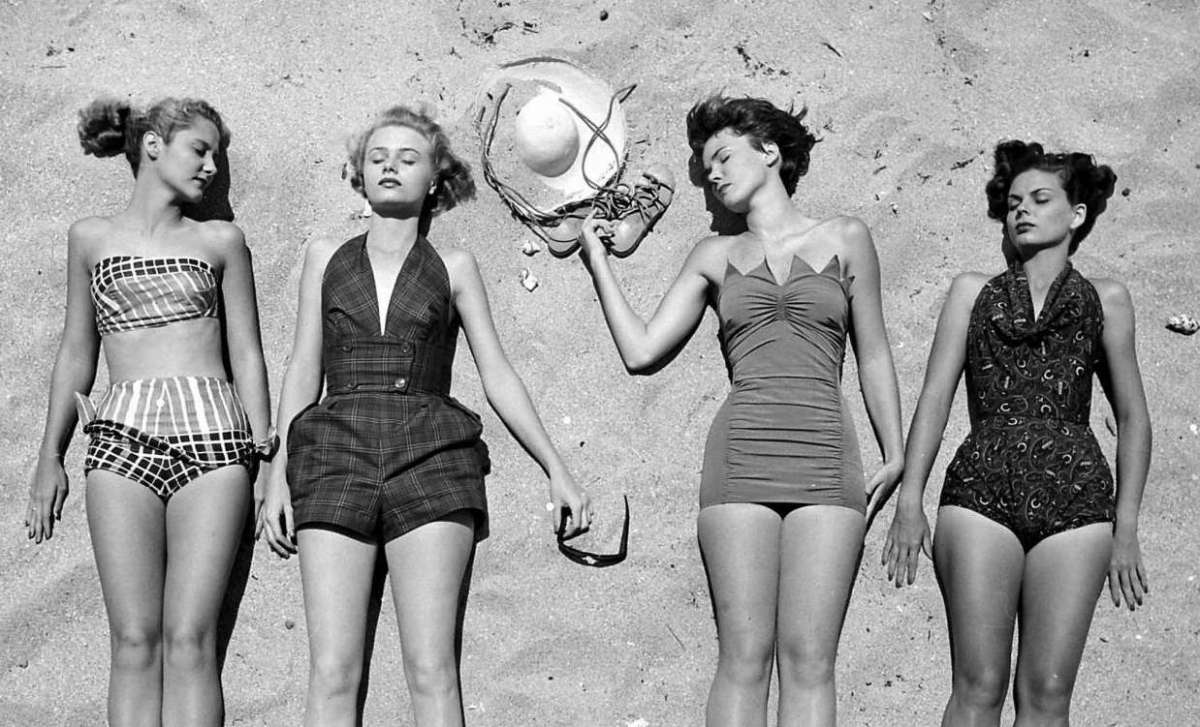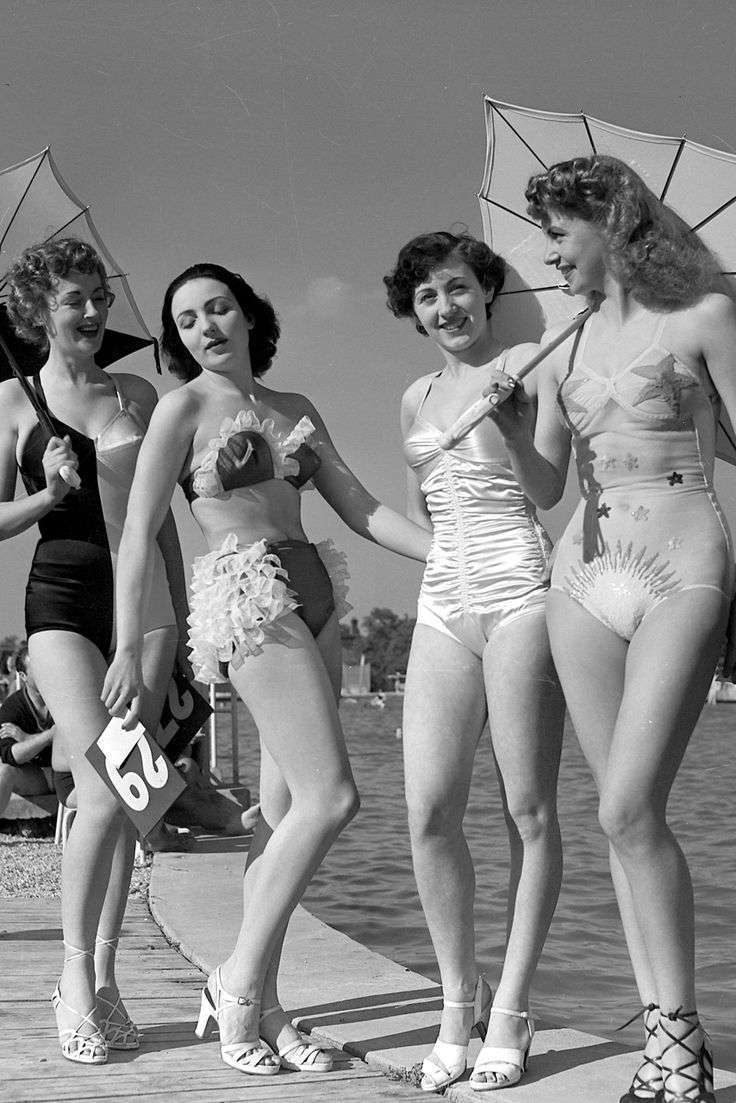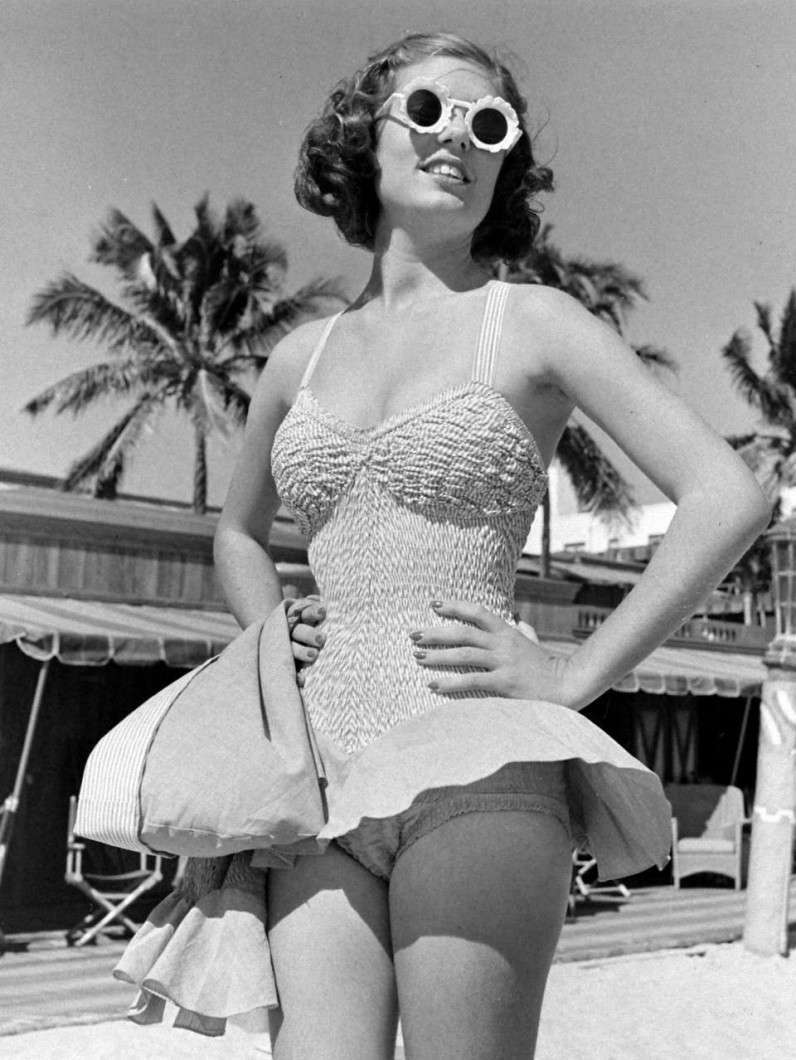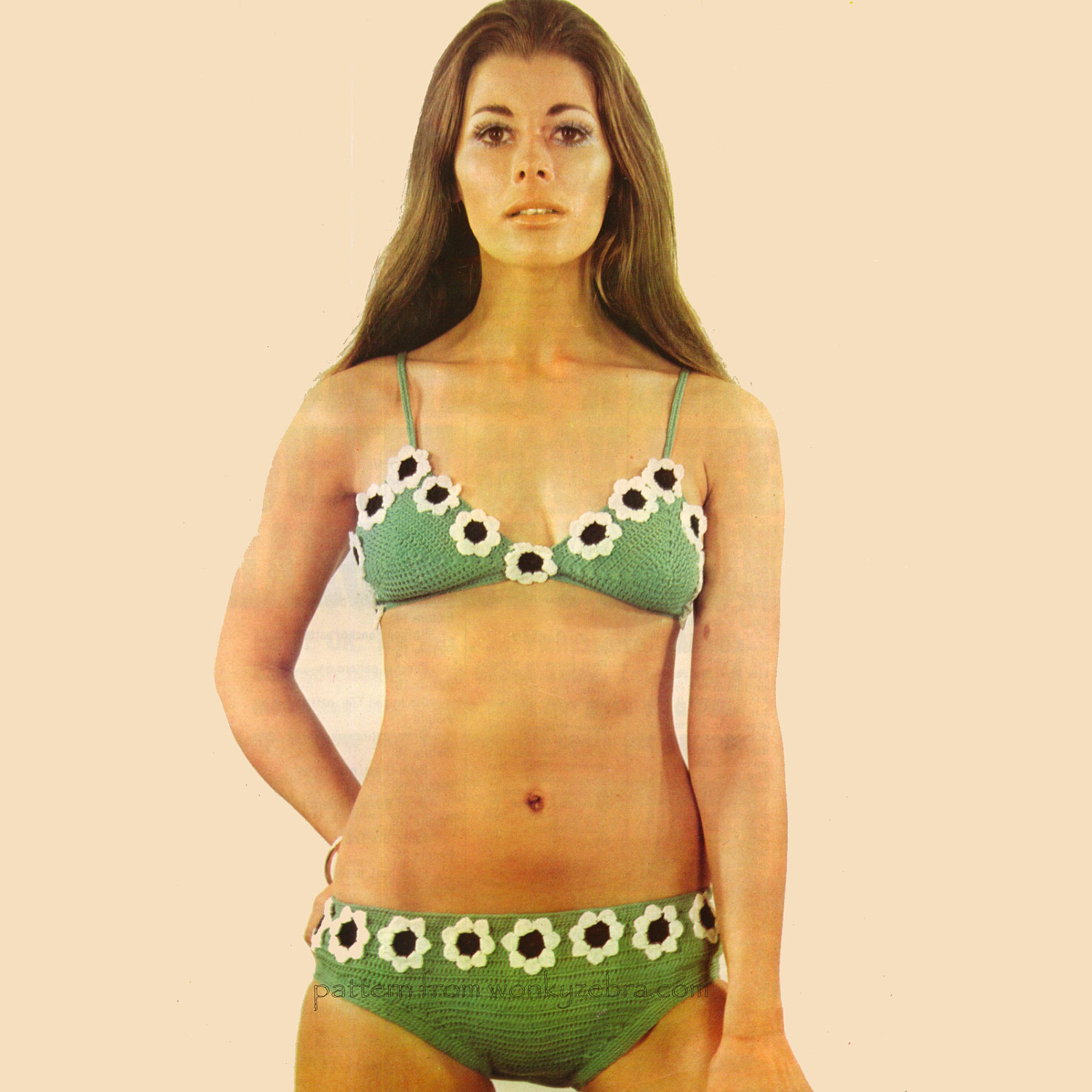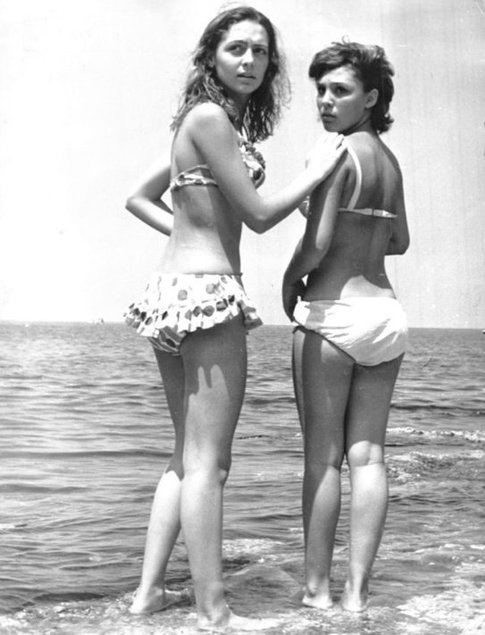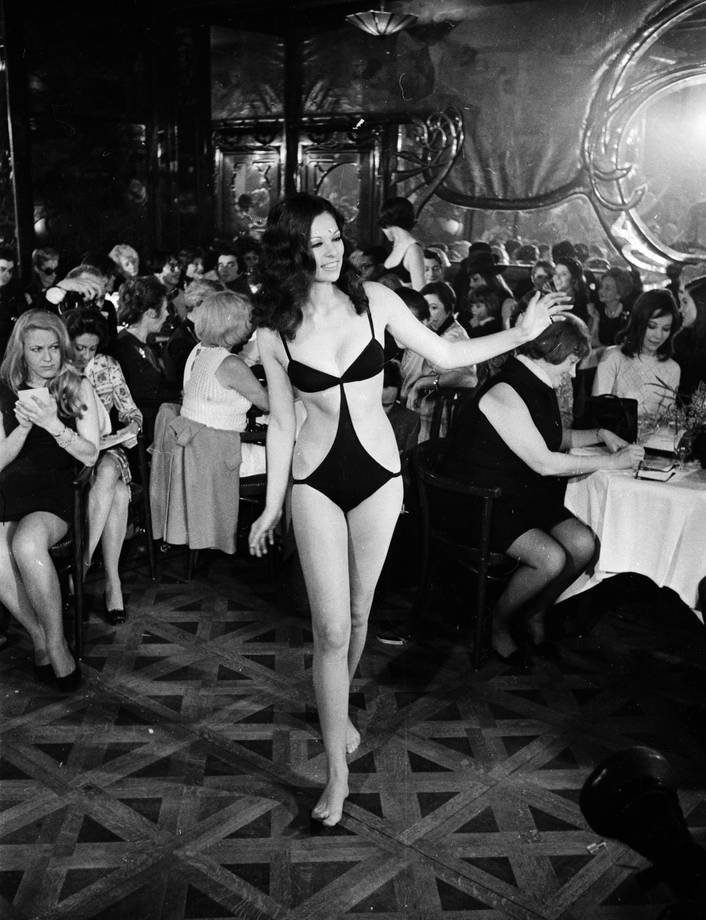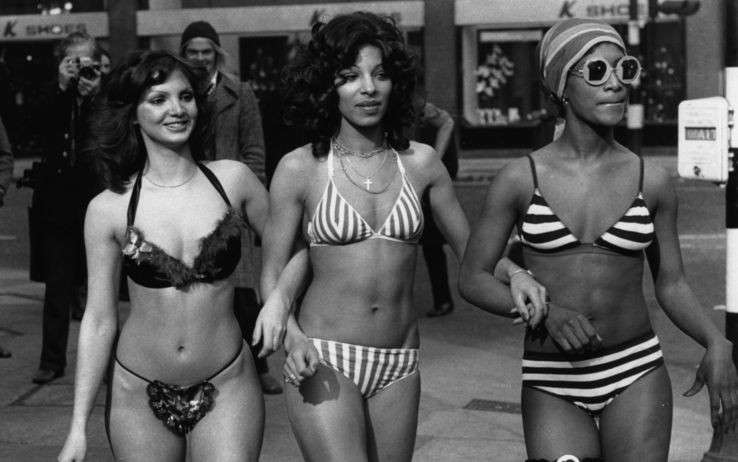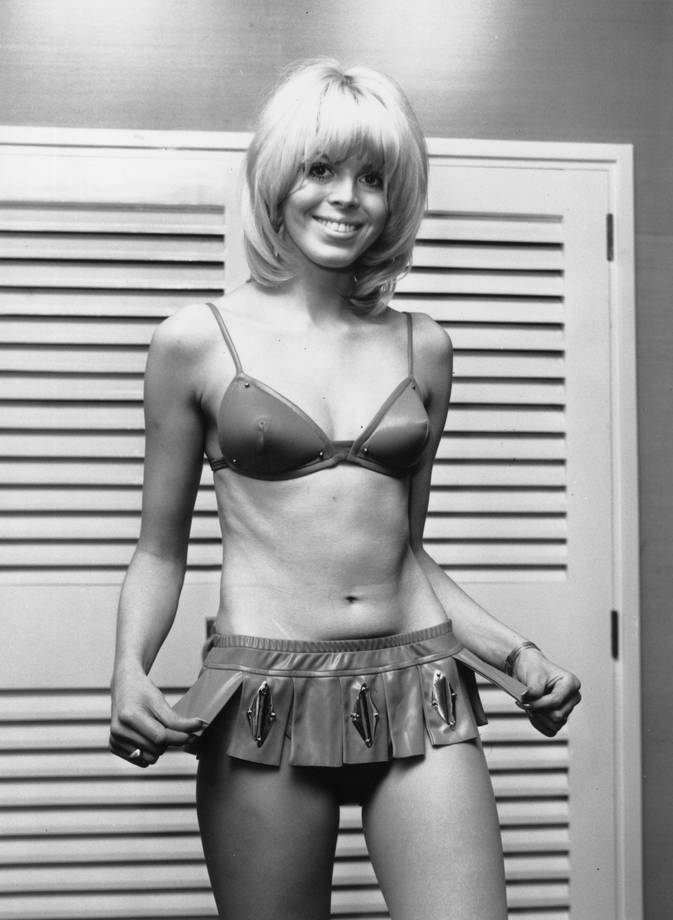The history of the swimsuit and its evolution have gone hand in hand with the transformation of thought and the progressive liberalization of customs and social habits, even though its roots sink into a remote past. One of the first testimonies of what can be considered a bathing suit is found in the beautiful mosaics of Villa Romana del Casale in Piazza Armerina – Sicily – Italy. Actually, women represented, known as bikini girls, because of the two pieces they wear, are athletes who play ball and run rather than bathe: in fact, in antiquity it was not customary to make baths and this type of garment called “subligatula” was used in spas.
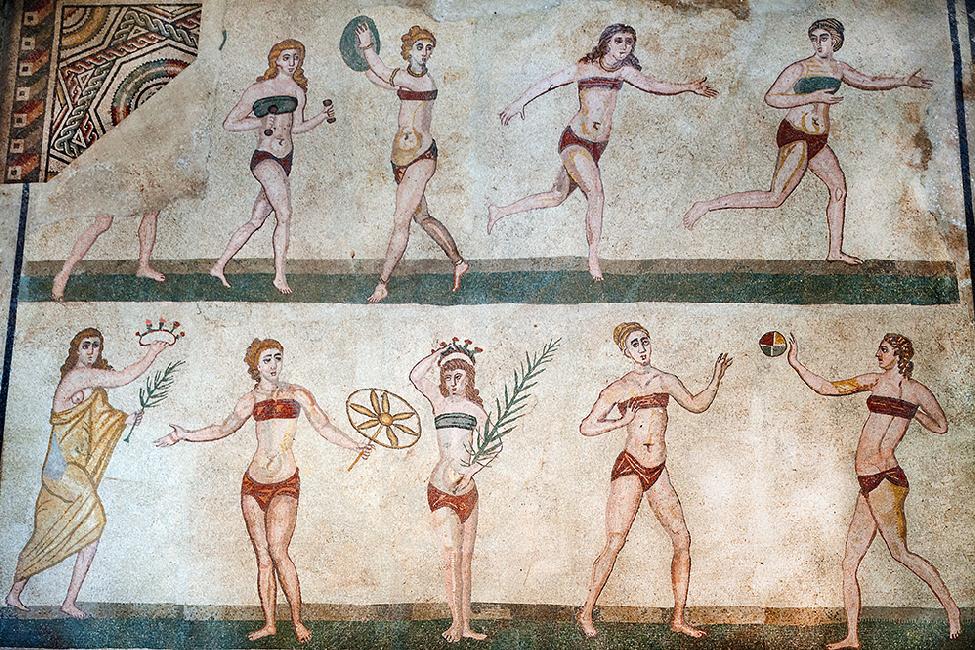
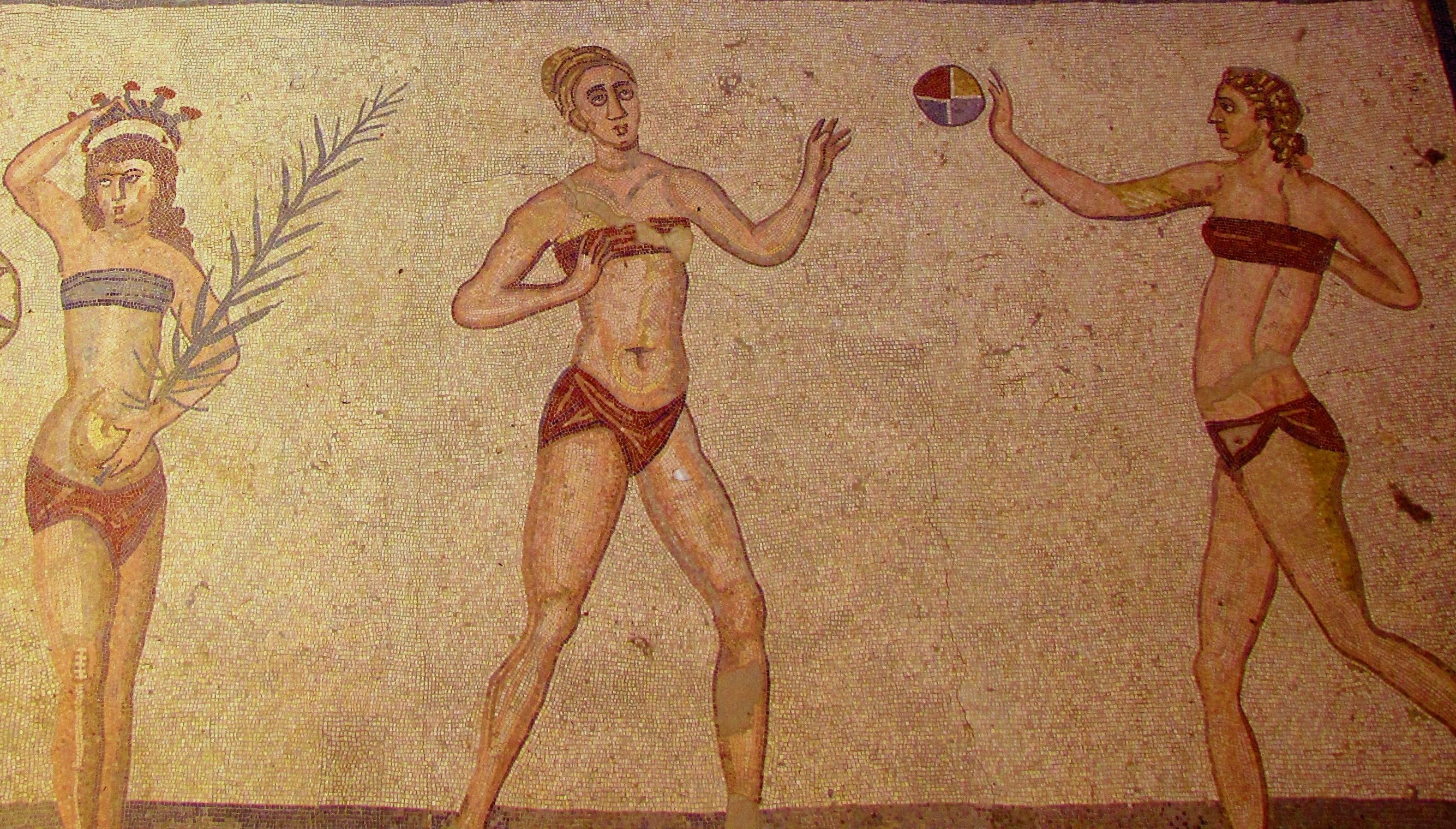
What undoubtedly fascinates in the swimwear story is the fastest reduction process, in terms of measure, that has characterized this clothing item during the last century
Until 1900
In the ancient times, the practice of dipping into the sea remains uncommon. The Middle Ages and the Renaissance do not bring significant changes: you generally dive with no clothes, except for some bathing documented since 1400, featuring a bodice with strap and skirt, sometimes completed by a turban.

From 1750 in Paris the fashion of baths spreads, either in ponds or rivers, or healthy diving in the sea. It is during this period that it starts the habit of moving to the coasts of Normandy or the Mediterranean Riviera to enjoy the wholesome waters of the sea. An occasional dress with corset and trousers is created, in a sailor’s thick canvas, often overlaid by a large skirt that swells like a balloon when inevitably touches the water.
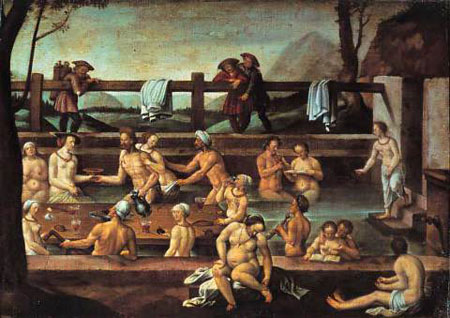
With the arrival of the nineteenth century, women swim in the sea and make it wrapped in abundant cloaks closed to the neck. Bathers get to the beach in cabins provided with wheels or curtains where they change their clothes. In the second half of the nineteenth century, beachwear is still very castigated. When you do not dive, or just get out of the water, you stay on the beach with light city clothes, in light colors, with gloves and sunshades, to protect yourself from the rays and avoid tanning, a feature of the lower classes. Short exposures to the sun, for therapeutic purposes, are advised by doctors only from the second half of the nineteenth century. Swimsuits are characterized by swollen pants, calf-lenght, completed with a long waist up to the knee and wide skirt.
In the seventies of the nineteenth century, the garments shrunk slightly and the skirts of the surcoats became less wider. The outfits are enriched with white and blue ribbons according to the “sailor suits” fashion, with the rectangular collar on the back. The most used fabric is the flannel. In the meantime the beaches are equipped, the cabins become fixed and the first niche wicker chairs appear. Puff sleeves and bustiers under the costume to highlight the thin waist tailored in wool, usually in blue, black and red. To complete the outfit lightweight and openwork shoes to let the water pass, with long strings to tie around the ankle, while foulards in waterproof fabric to knot over the head were the hit.
Since 1901
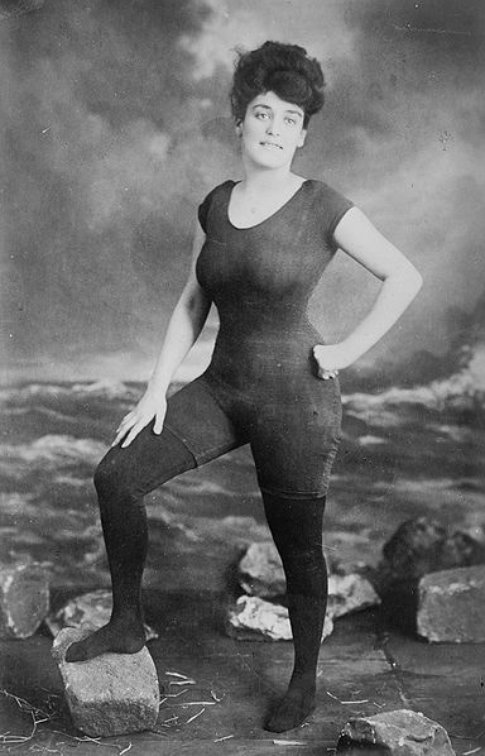
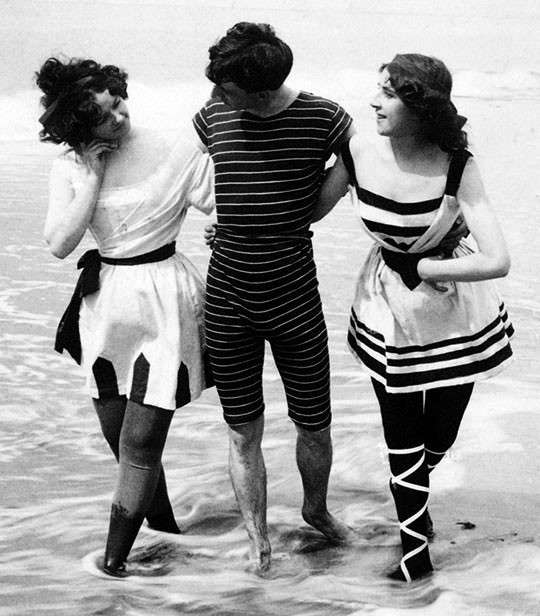
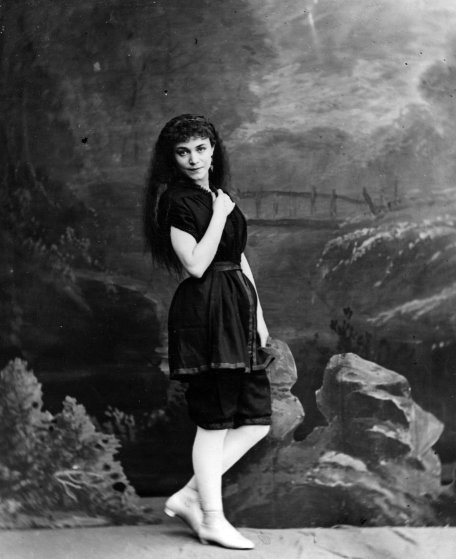
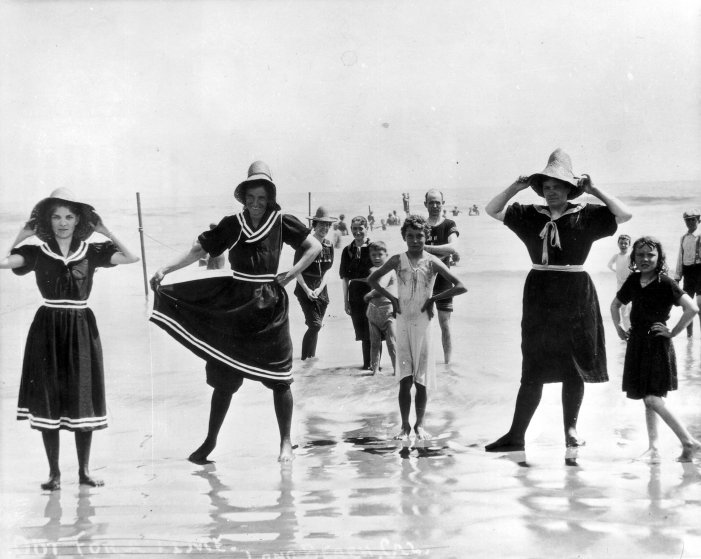
The swimwear does not undergo significant changes between 1900 and 1920: the garments shortened slightly, the socks are no longer worn and the neckline are slightly enlarged. The colors become clearer, the first bathing shirts appear, similar to white nightgowns. In the meantime, it becomes a habit a summer vacation to the sea. Fashion specialists at the time recommend shapes that do not wrap the figure up, made of top quality fabrics that do not stain in water. To avoid the ready-made models, better is to make the bathing suit at home by getting good fabric, usually blue, black, white or red wool, and any decorations. Wool continues to be preferable to cotton since, being heavier, when wet it does not adhere to the body and becomes transparent.
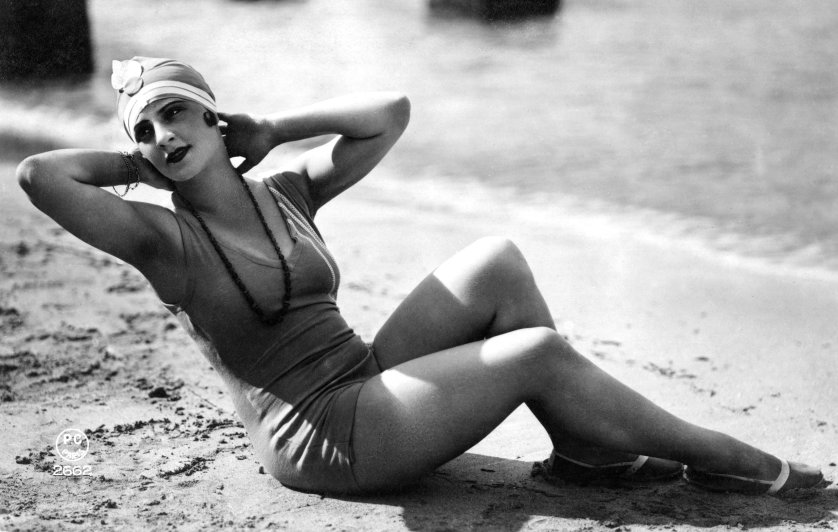
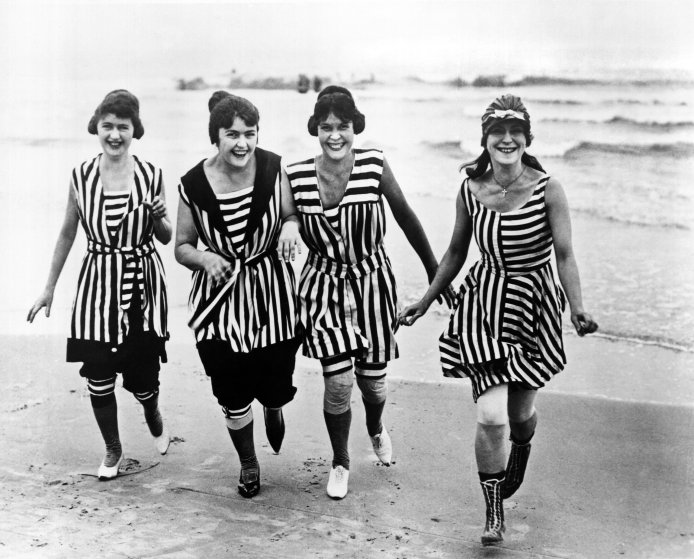
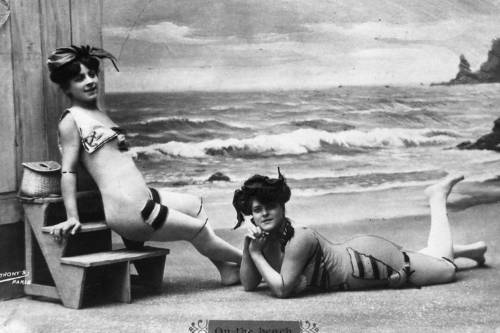
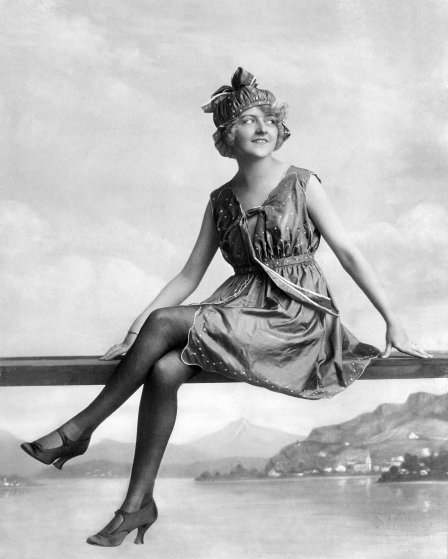
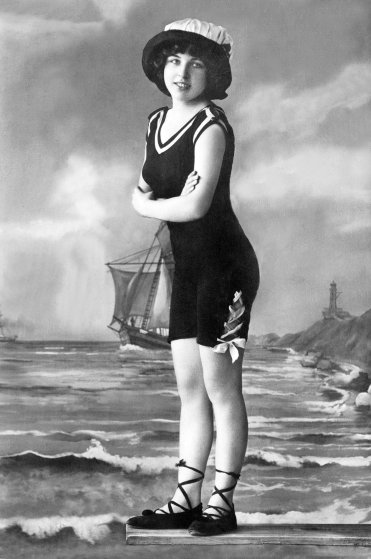
In the 20s
Over the course of the 1920s, many of the fashion-linked ties melt. Smaller costumes have a new meaning as an expression of a re-established female freedom.
The 1920’s swimming suits consist of short skirts in taffetas with a waist belt or athletic swimwear in woolen jersey, slim-fit and adherent, sleeveless, always coordinated with shorts pants or coulottes.
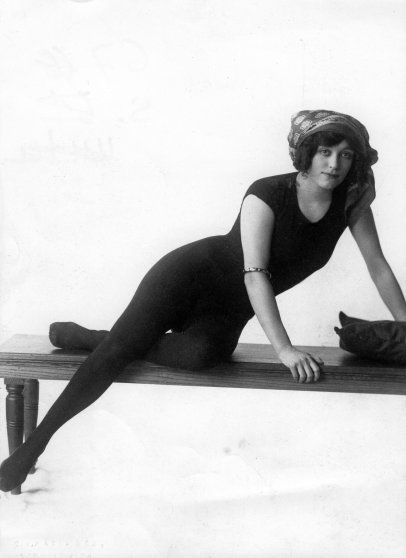
The athletic swim suits, on Annette Kellermann‘s model – they became popular after the Australian professional swimmer was arrested for police indecisiveness on Revere Beach in north Boston, – no sleees and slightly round slow-necked in both front and back, are now available in black or in basic colors, often with striped geometric designs or modern abstract designs. Women protect their hairdressing hairstyles by wearing white piquette caps or bathing caps.
Famous tailors and couturiers begin to design swimsuits patterns in silk and precious fabrics. Everything is dominated by simplicity, but accompanied by a great elegance. The pajamas are the latest seaside novelty of the late 1920s: wide, long, soft trousers, worn with sleeveless shirts, waistband belts and jackets. The hair is short, often covered by handkerchiefs covering the forehead knotted behind the head.
In the 30s
The 1930s offer masculine costumes for swimming: a long dark tricot shirt matched with shorts tied to waist by a belt. For sunbathing, however, taffeta or silk-colored costumes are preferred. White and blue dominates. They are often coordinated with a beach jacket and beach bag with seascape decorations and pajamas multiply in thousand of variants and shades. Explodes the fashion of the Valaguzza belt, a sophisticated accessory made up of a woolen belt with a buckle that can hold mirrors and makeup bags, and possibly cigarettes.
Meanwhile, naturist ideas about the benefits of the sun and its rays further reduce the cloth with which bathing suits and sun are tailored. The necklines on the back became wider, and since 1932 the shorts are completely detached from the bodice. The swimsuits, made in jersey or Lastex, adhere to the body making the figure slender, the fashion of pareo to carry long or short, indifferently is spreading. Since 1937, bathing suits, now made of elasticated silk fabric, are increasingly made up of tied shorts and bra.
From 1946 to 1960
The great revolution came in 1946 by Swiss designer Louis Reard – a onetime engineer with Renault, the car company, with the launch of the french tailor Jacques Heim: in Paris, on July 5, 1946, the 19-year-old French model Micheline Bernardini at the famous Piscine Molidor for the first time wears those four fabric triangles known as bikini. The designer was forced to choose a nude dancers from the Casino de Paris as he was unable to find a ‘respectable’ model for his swim suit. The small panties that reveal the umbilicus, cause a real choc, but, unsurprisingly, it was such a success that the model received more than 50.000 letters from her fans. It will take years and courageous bathers before the bikini gets into the common beachwear.
The Fifties still put the veto to the succinct two-piece bathing suits. The bikini is still banned and often its use in public places is punished by law enforcement officials for outraging the shame. The acclaimed protagonist of “La Dolce Vita” actress Anita Ekberg in 1956 on the beach of Ostia – Rome, was detained, and fined.
The most common swim suit is one-piece, with tight and adherent skirt to wear with a sponge bathrobe jacket. Meanwhile, in Capri and Portofino are showed off the first shorts with shoulder-strap blouses, and calf-length trousers, sponge turbans or high fashion rubber petals swim caps so popular in the late 50’s.
From 1961 to nowadays
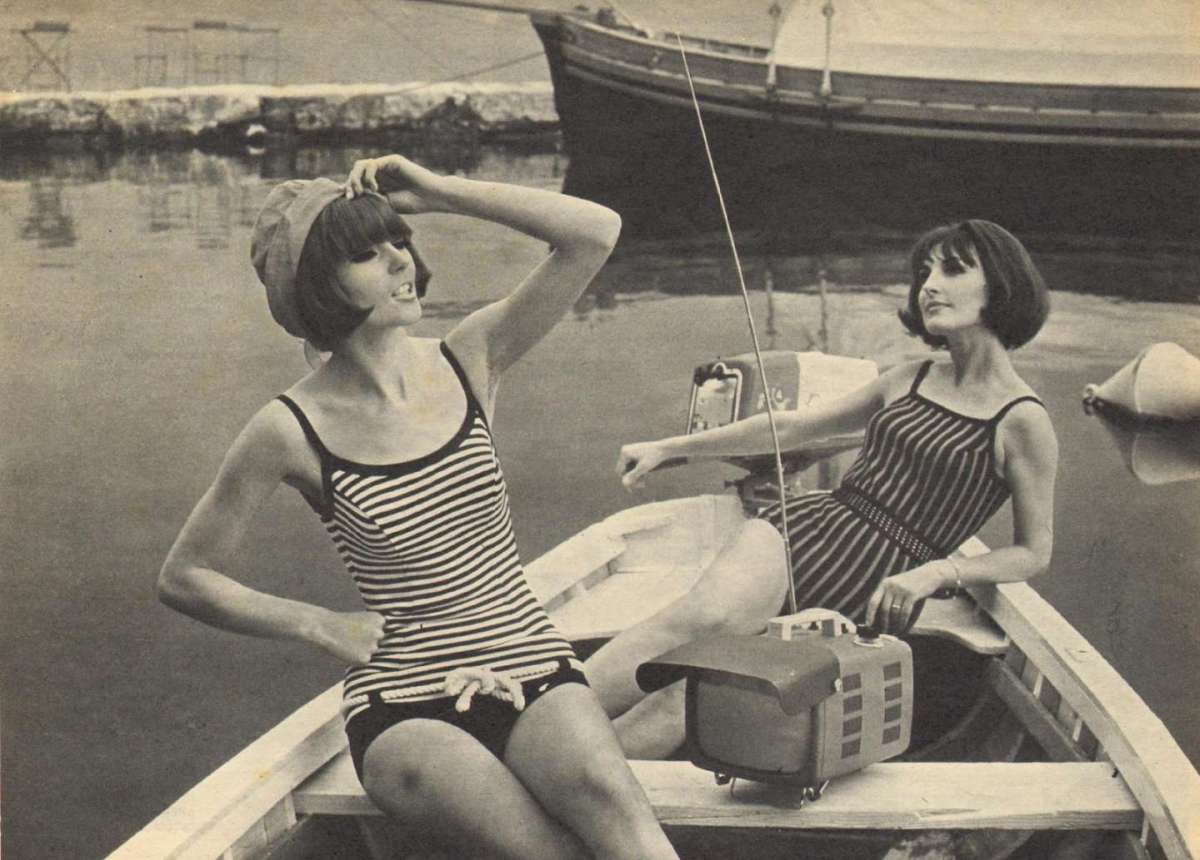
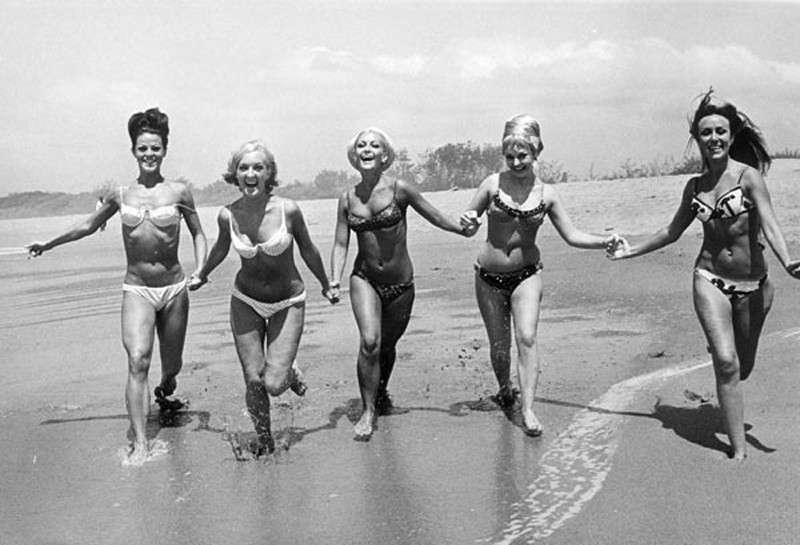
The fabulous sixties start with Brigitte Bardot wearing a Vicky checkered bikini on the beaches of Saint Tropez. The bikinis have padded bras and slips lined up on the hips, with embroidery, beads, crocheted fabrics. Emilio Pucci‘s fantasies go on handbags, beach robe and bikinis. The novelty is the revolutionary Lycra (trademark deposited by Du Pont), which ensures adherence to the body and dries quickly. The decade of the Sixties is also to be remembered for the scandal in America, aroused by the first topless, or monokini, worn for the first time in 1964 by an American girl on Lake Michigan.
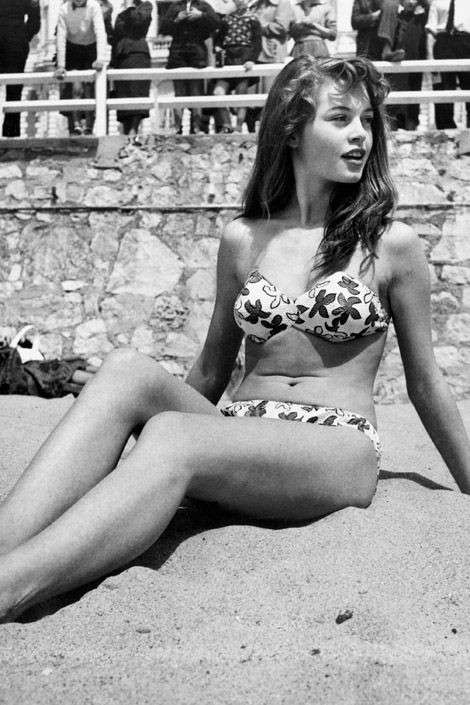
The white two-piece bikini with belt and small golden inserts by Ursula Andress as Bond Girl Honey Ryder in 1962 in 007 License to Kill is considered a monument in the history of this garment so as to significantly increase sales of the garment in those years, a bikini that has been reproduced year after year and basically still available today.
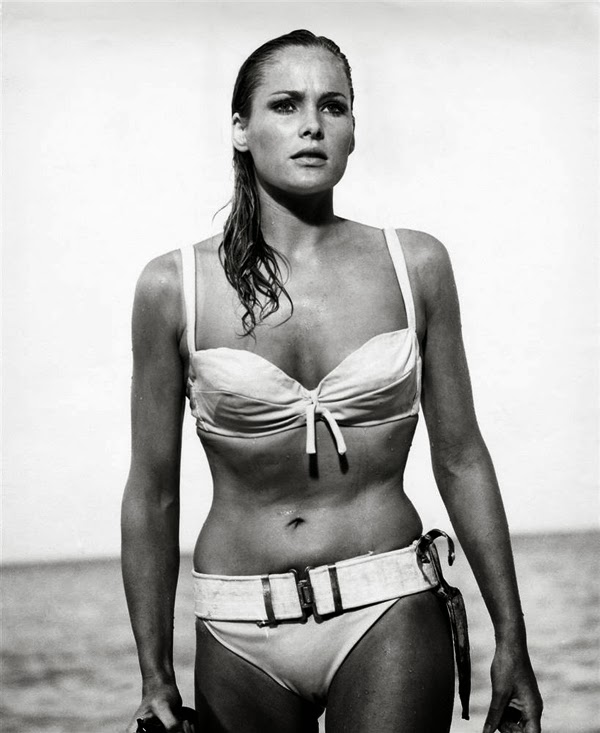
The fashion of Hippies influences the seventies. Smaller swim suits, triangular bras, no padding or special structures with what it would become an absolute must: the crochet bikini.
In the 1980s, however, the high-leg cut bikini triumphs, accompanied by a mini triangle top. The image of the top model Cindy Crawford, the symbol of those years, with her star-and-stripes bikini is unmissable.
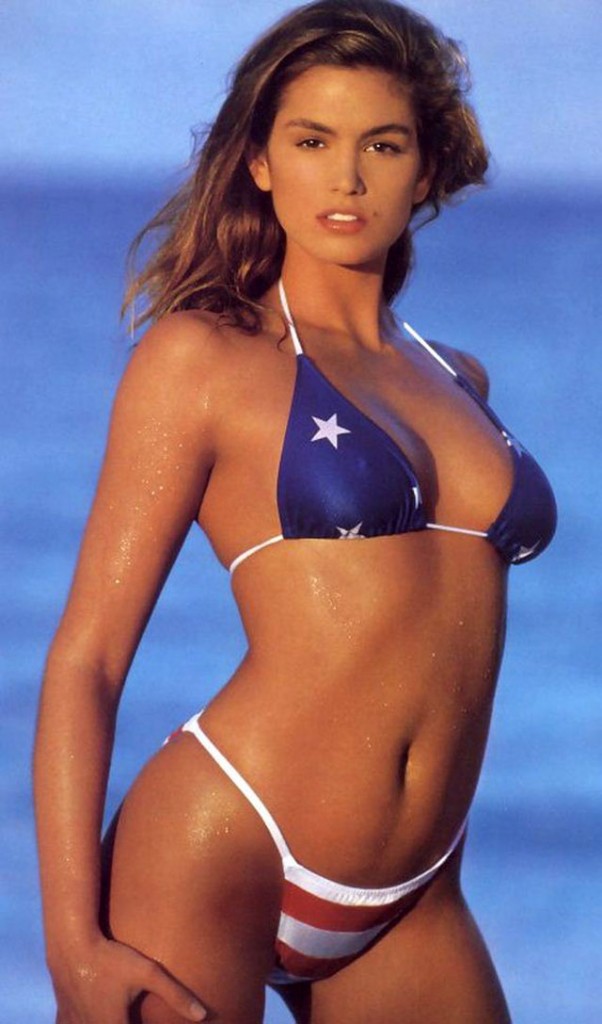
The one-piece swimsuit, however, is the real protagonist in the 90s, thanks to the Baywatch TV series and the world’s most famous lifeguard, Pamela Anderson. That’s why the beaches are full of one-piece swim suits, possibly fire red, extremely high-legged and always very adherent, able to emphasize shapes and tanning.

In a progressive reduction in its size, the swimsuit is up to the present day, between revival of styles, one-piece swimsuits, athletic and bikinis, in a parade of shapes that is renewed each year with the arrival of summer.
Sources: Time, Nauticareport, Pinterest


